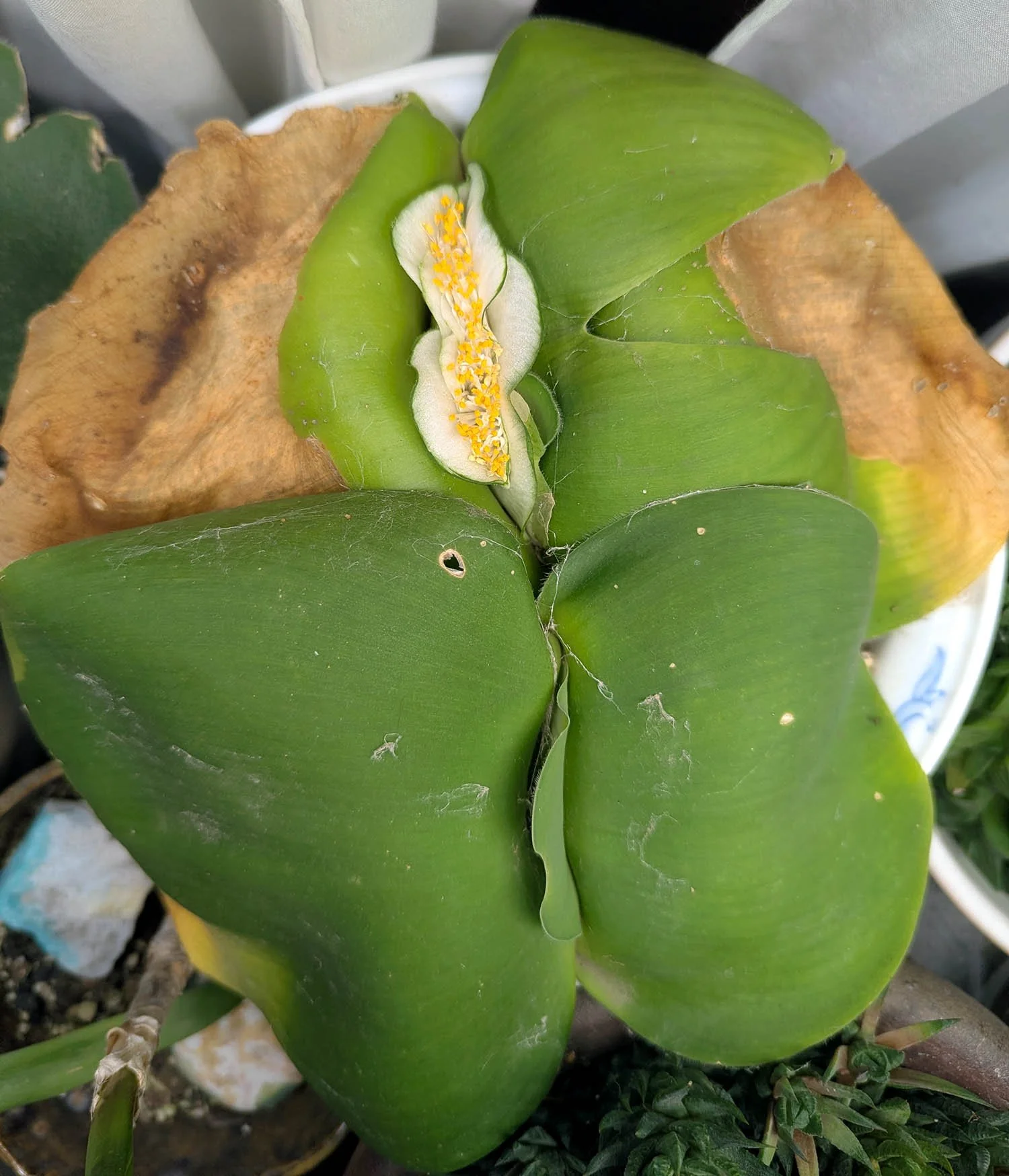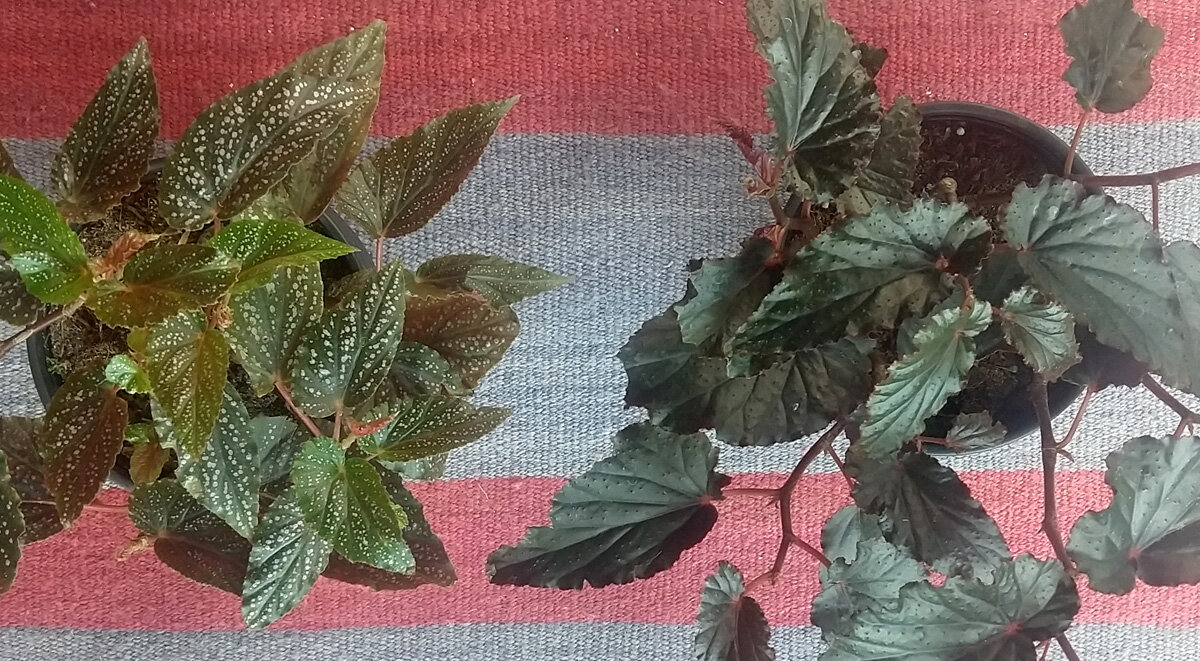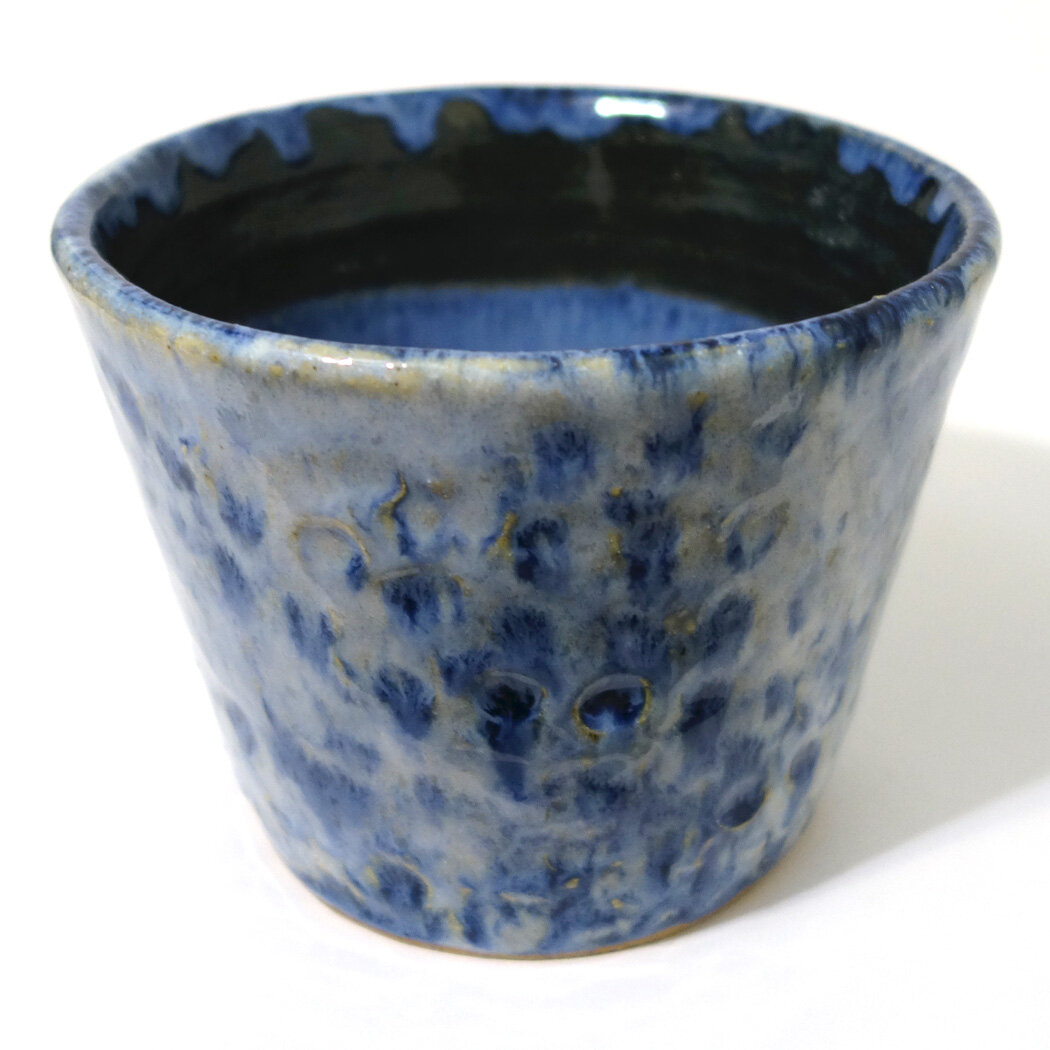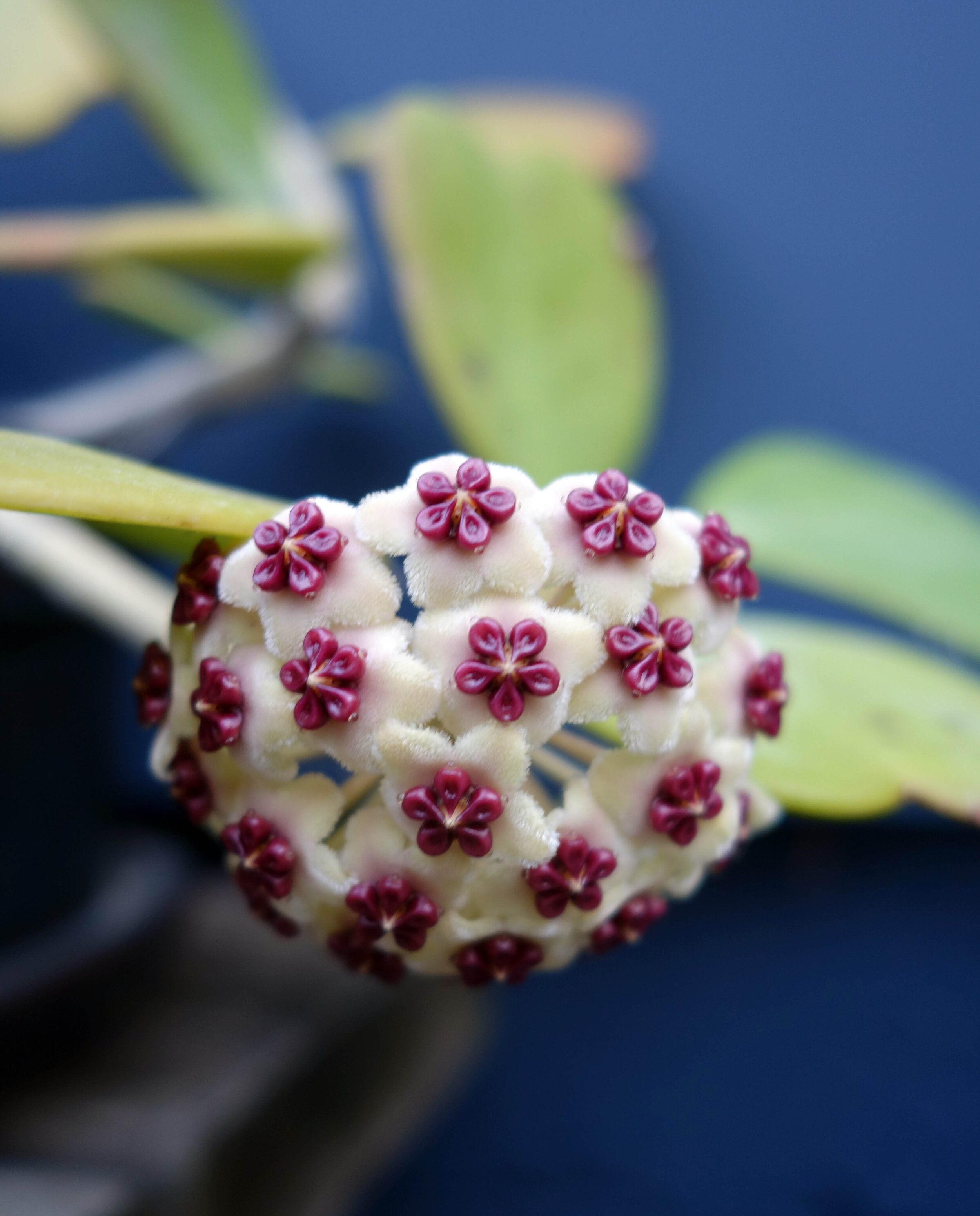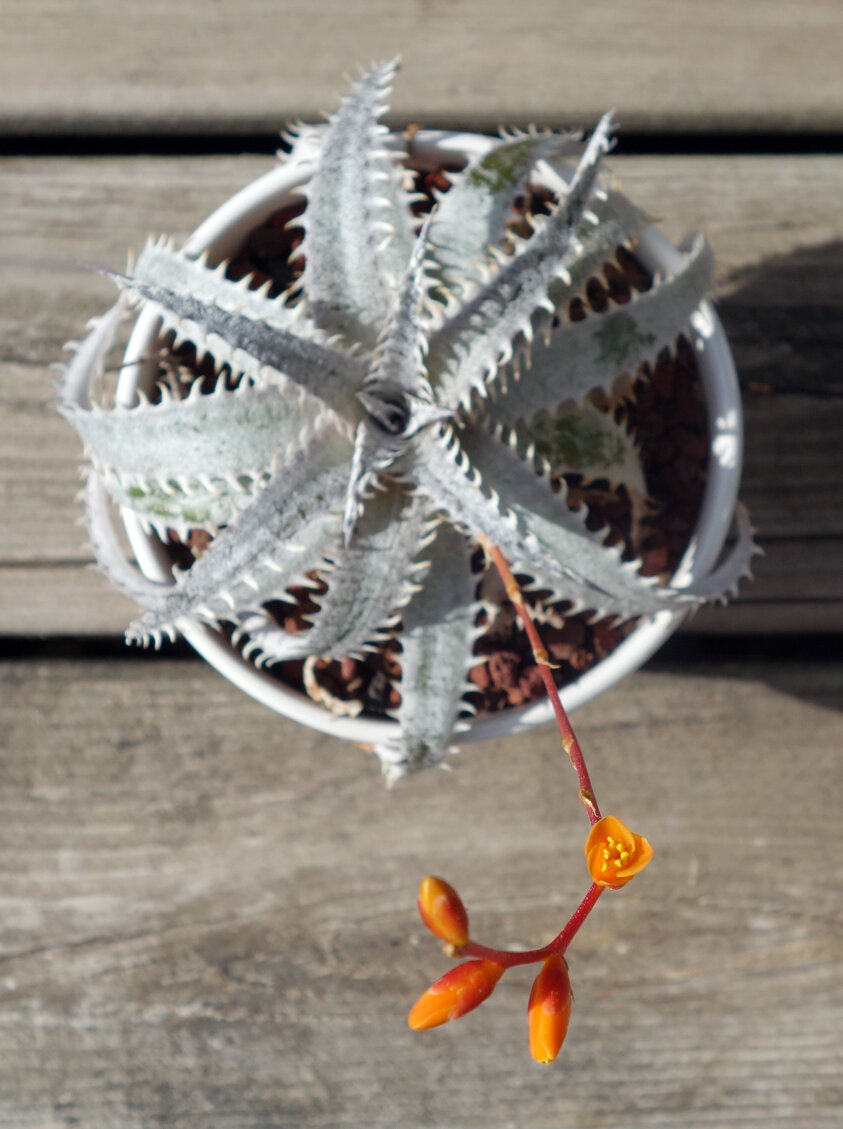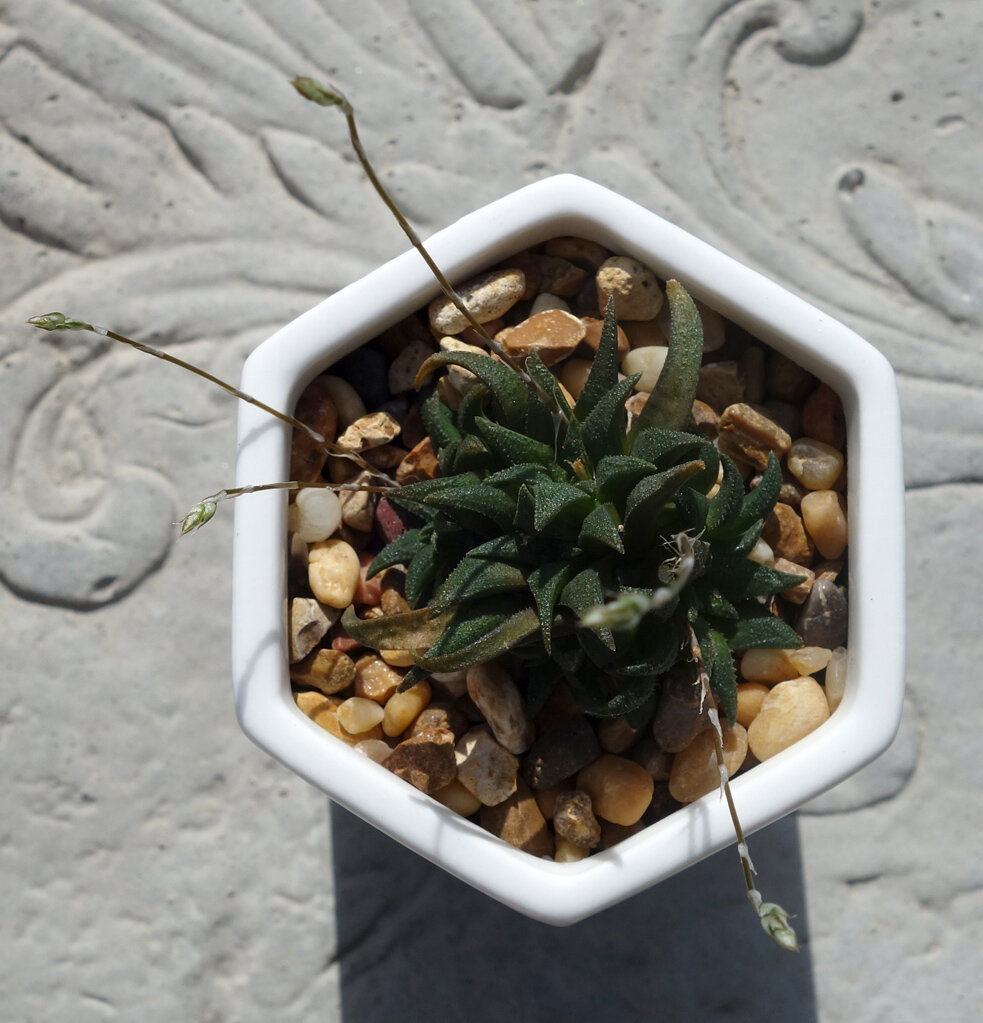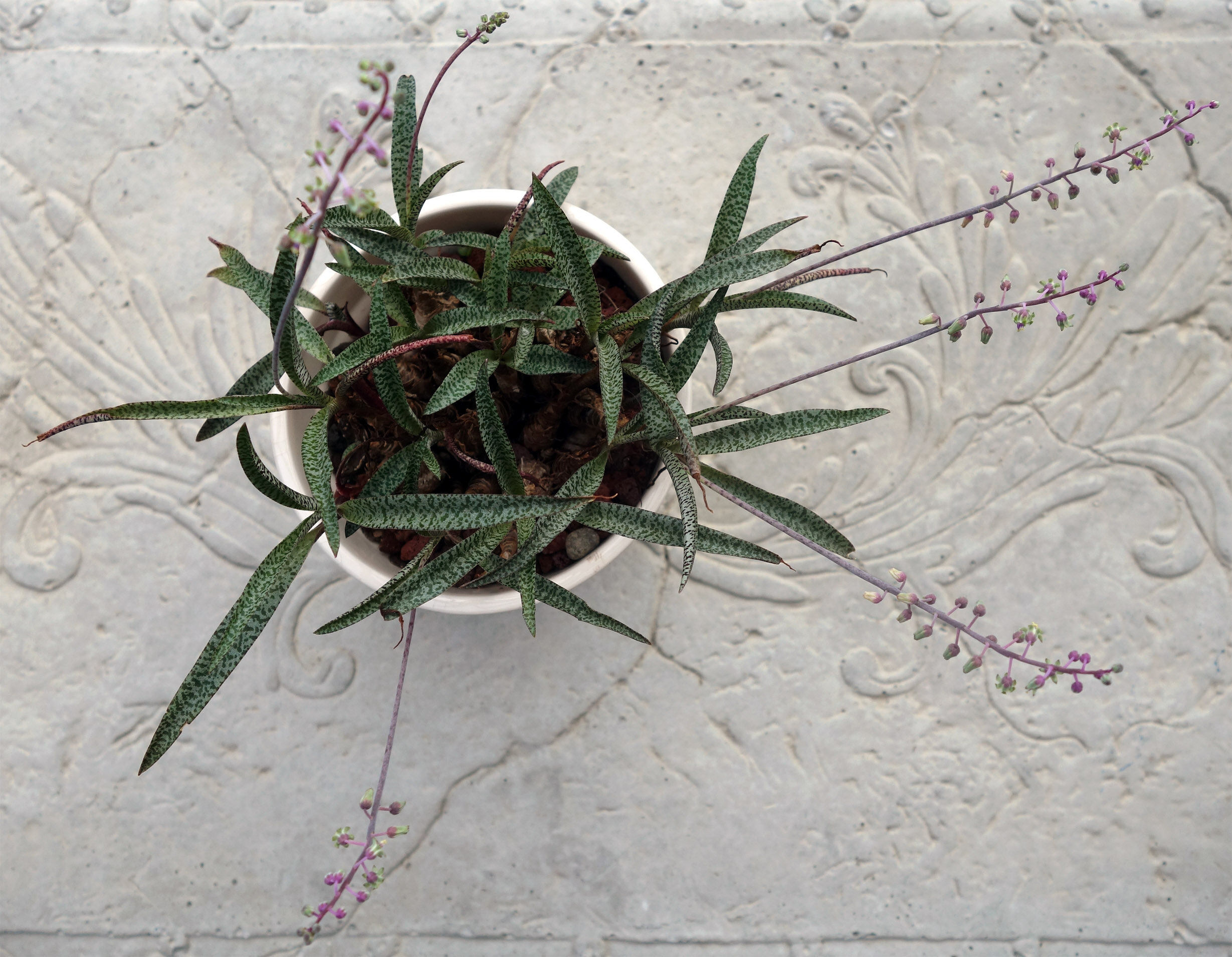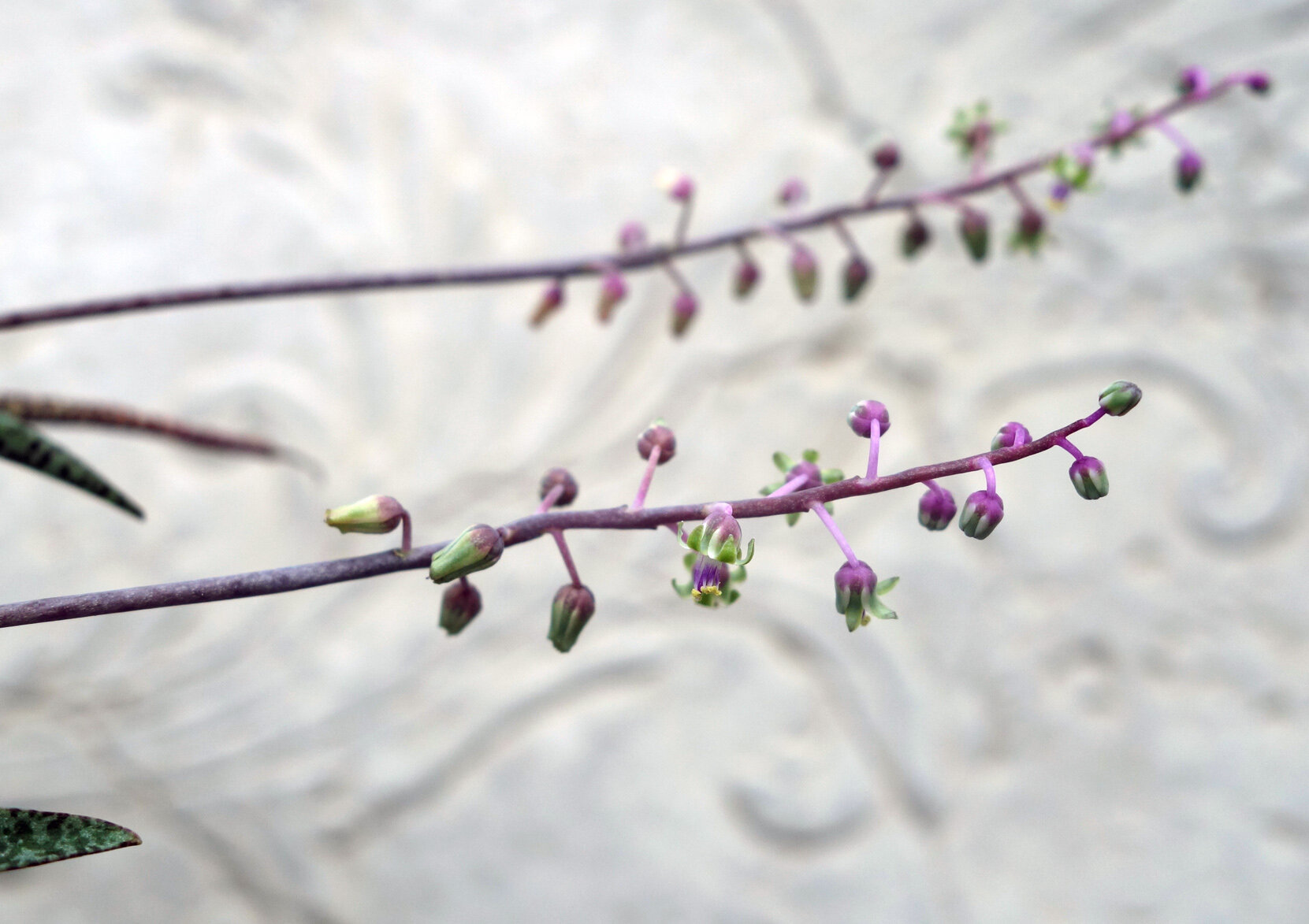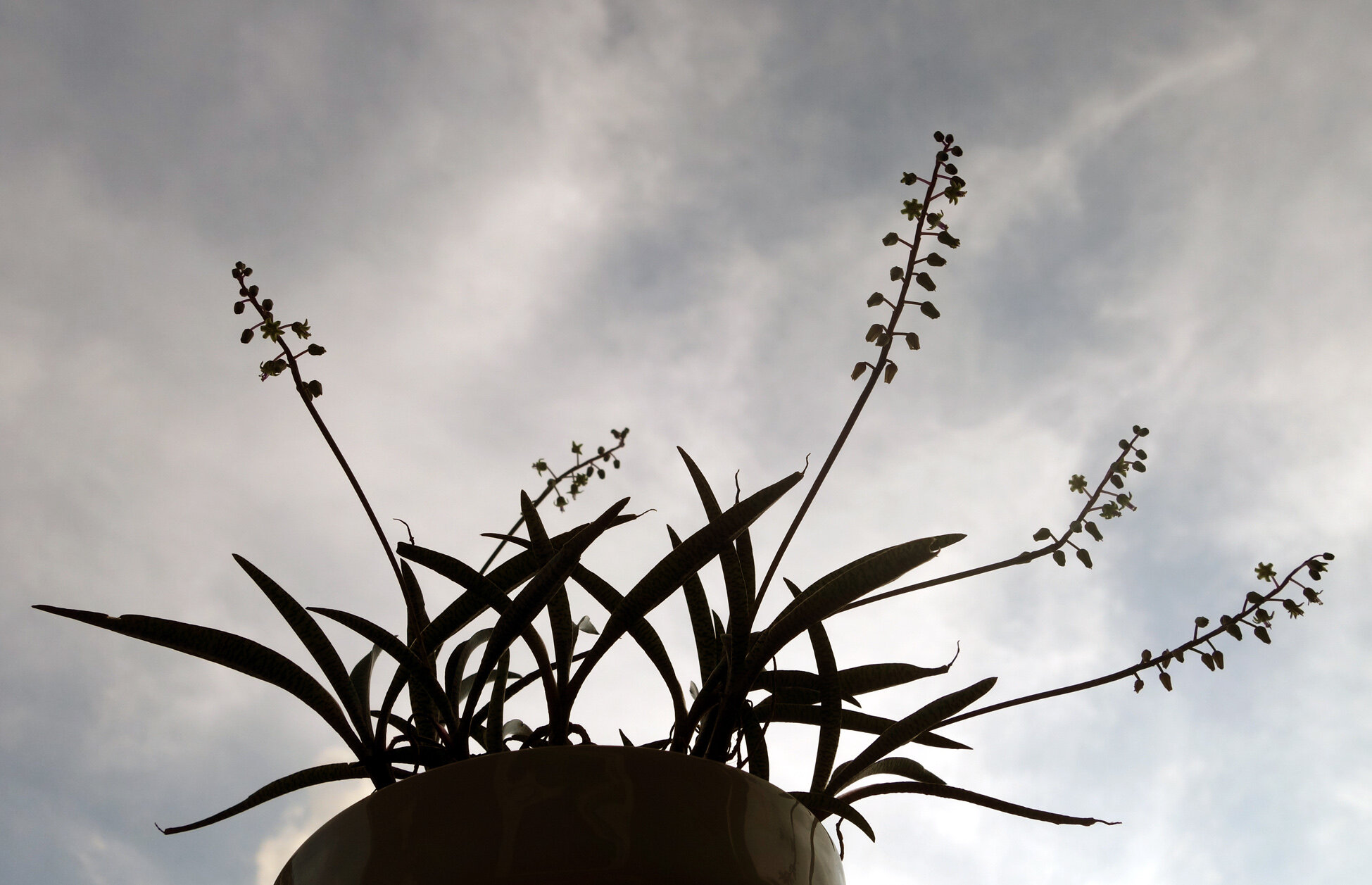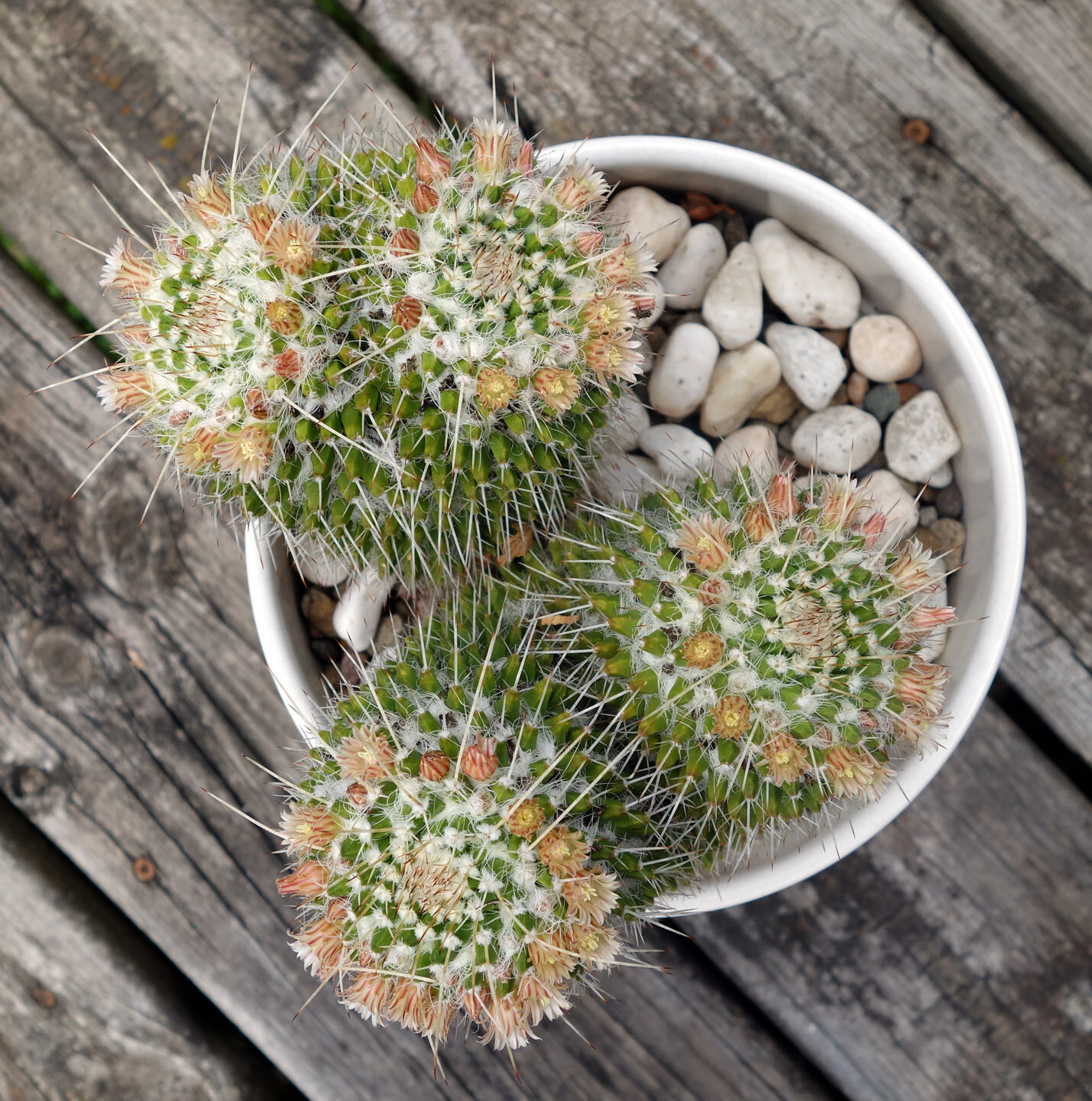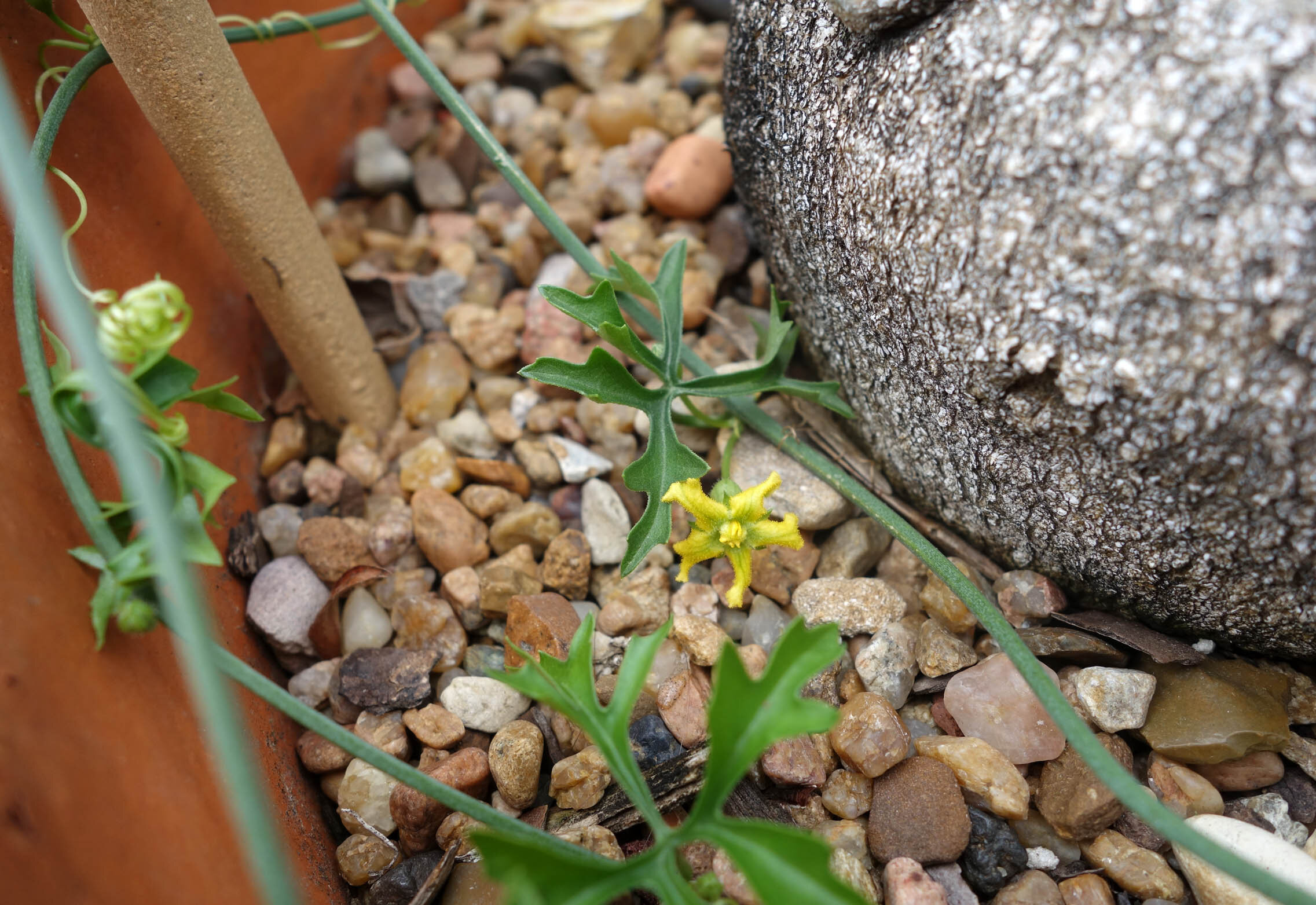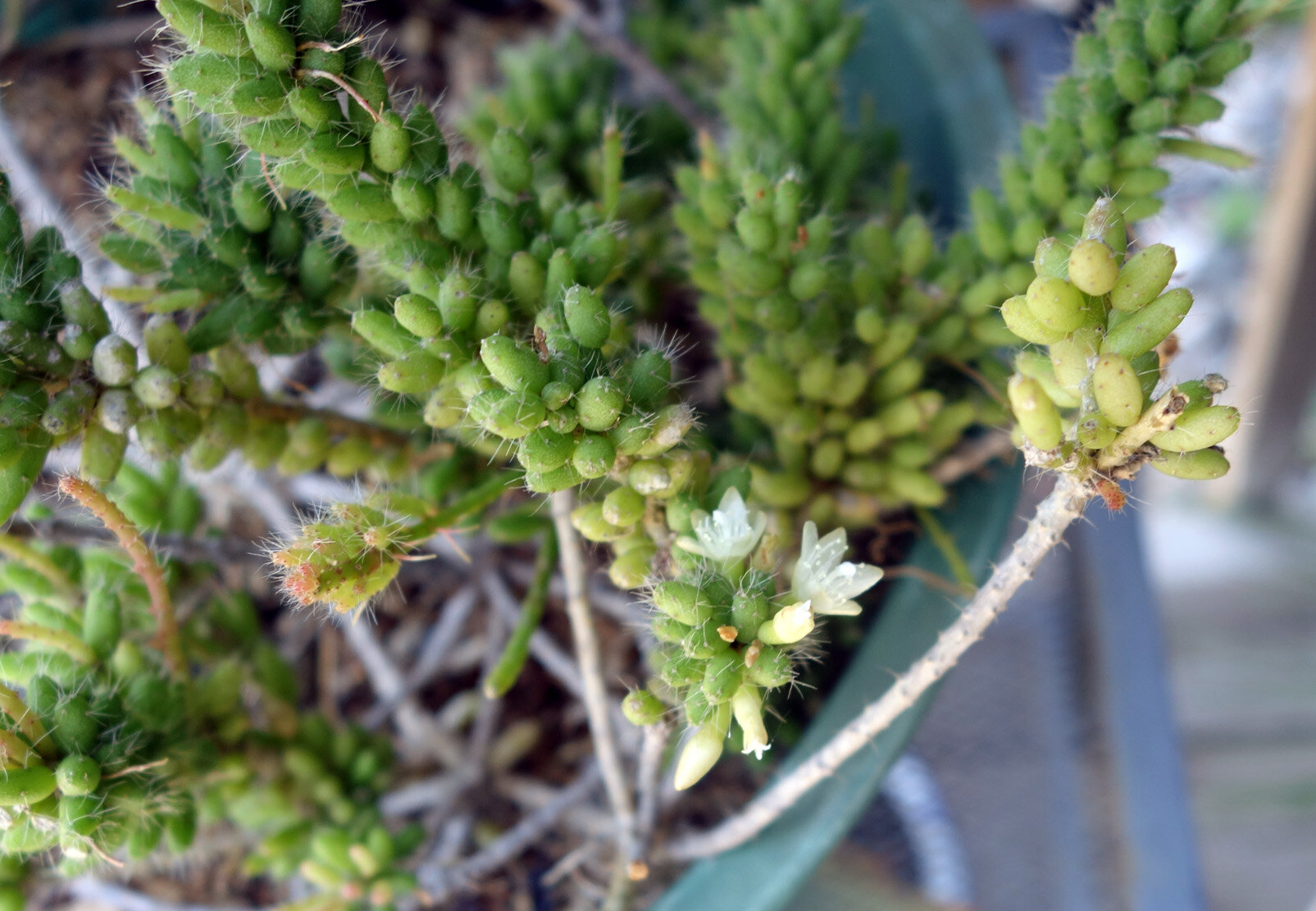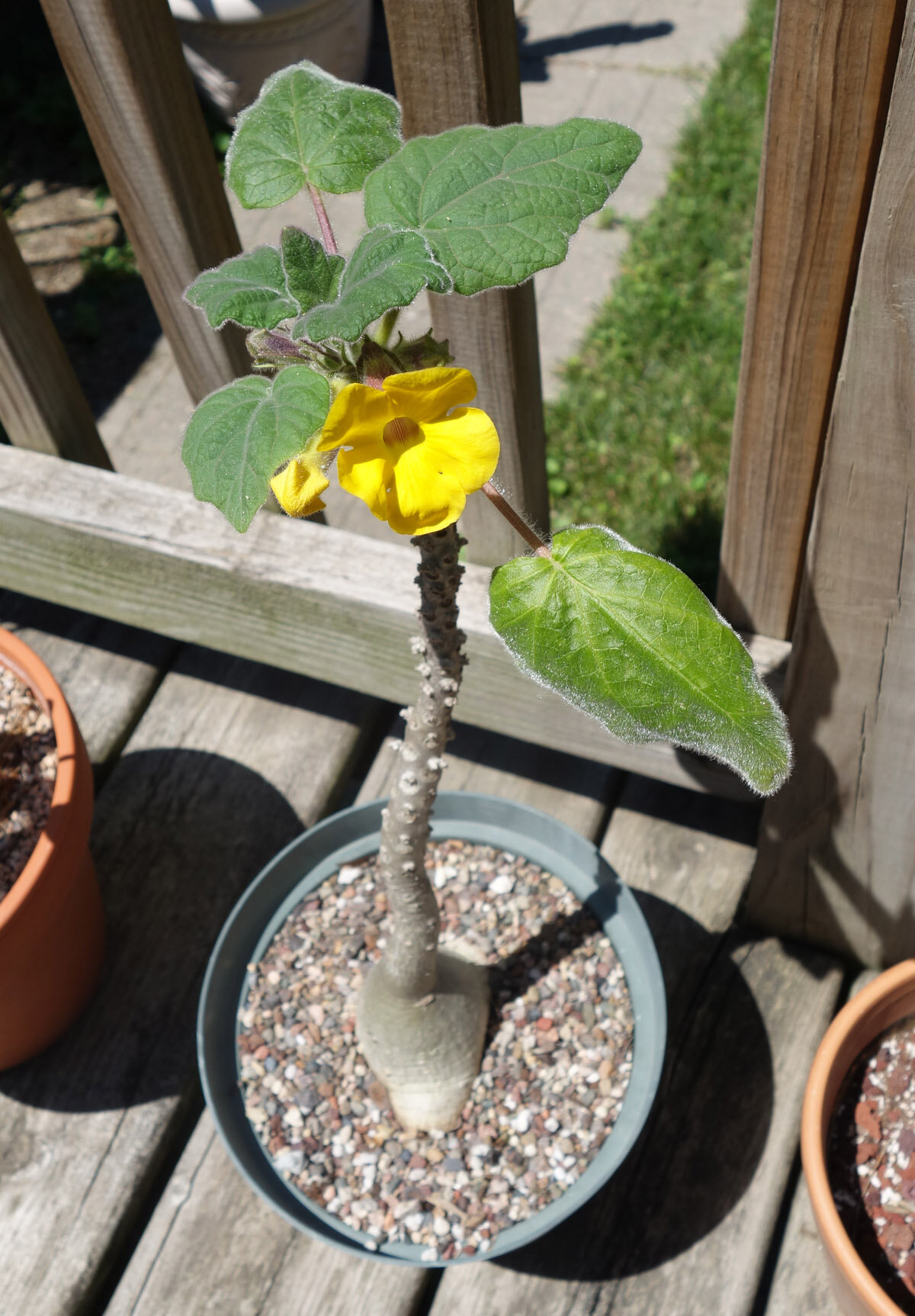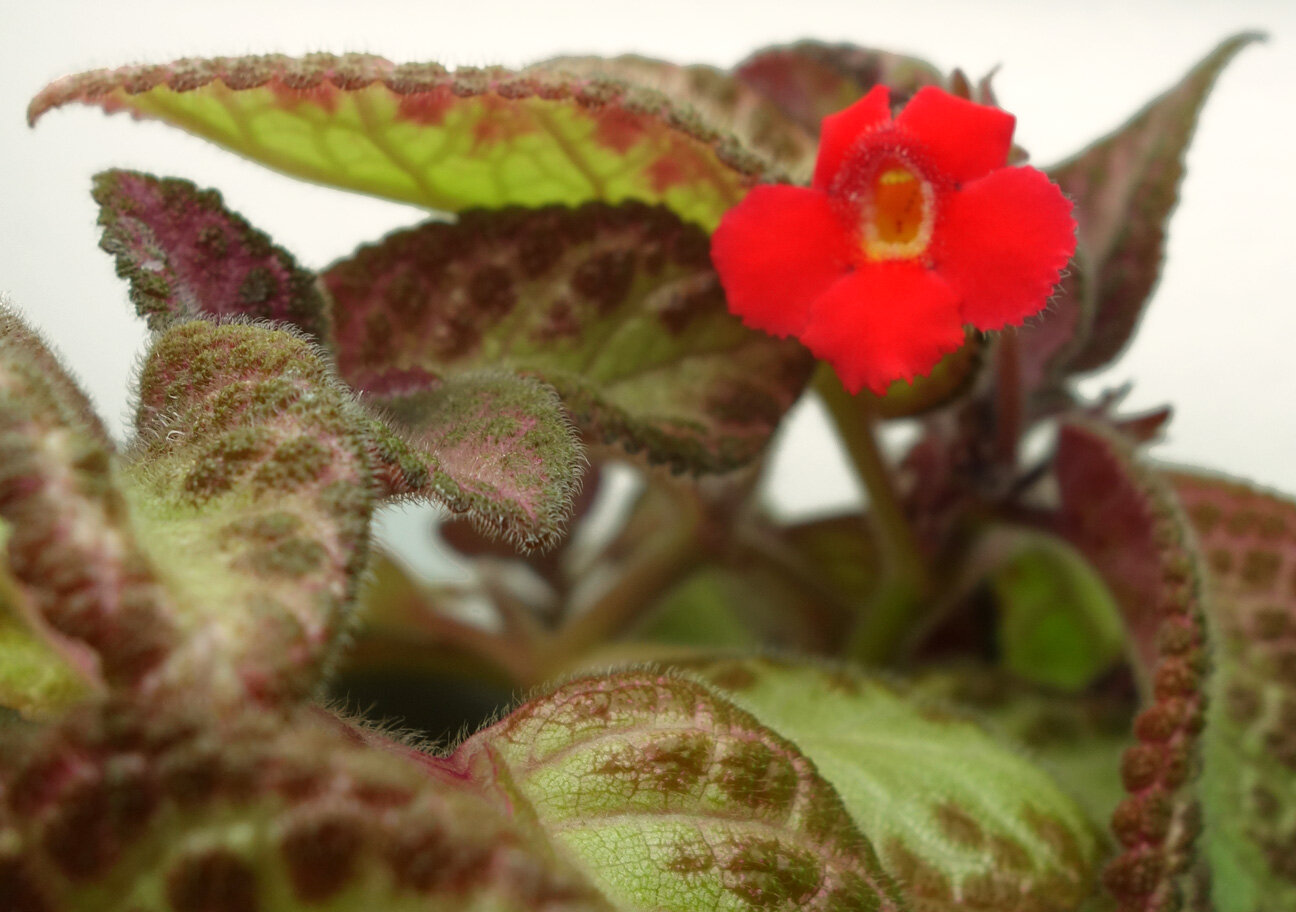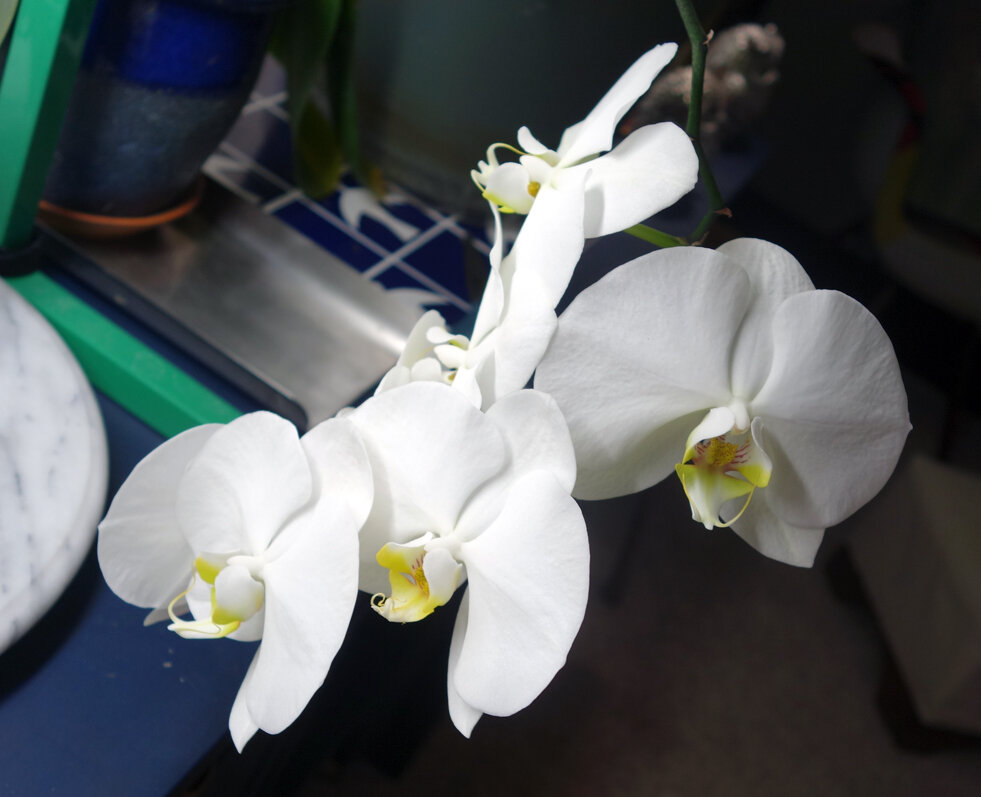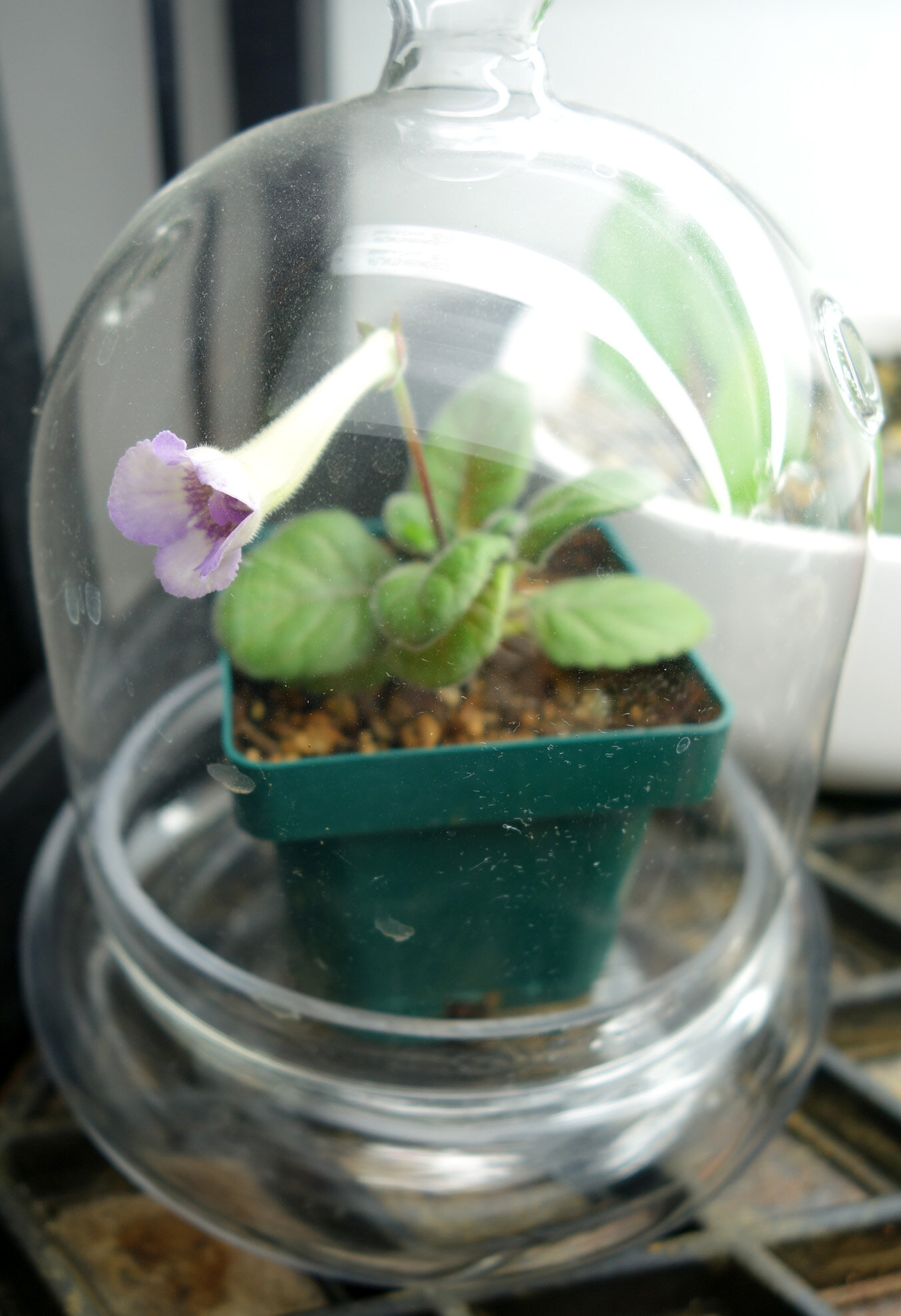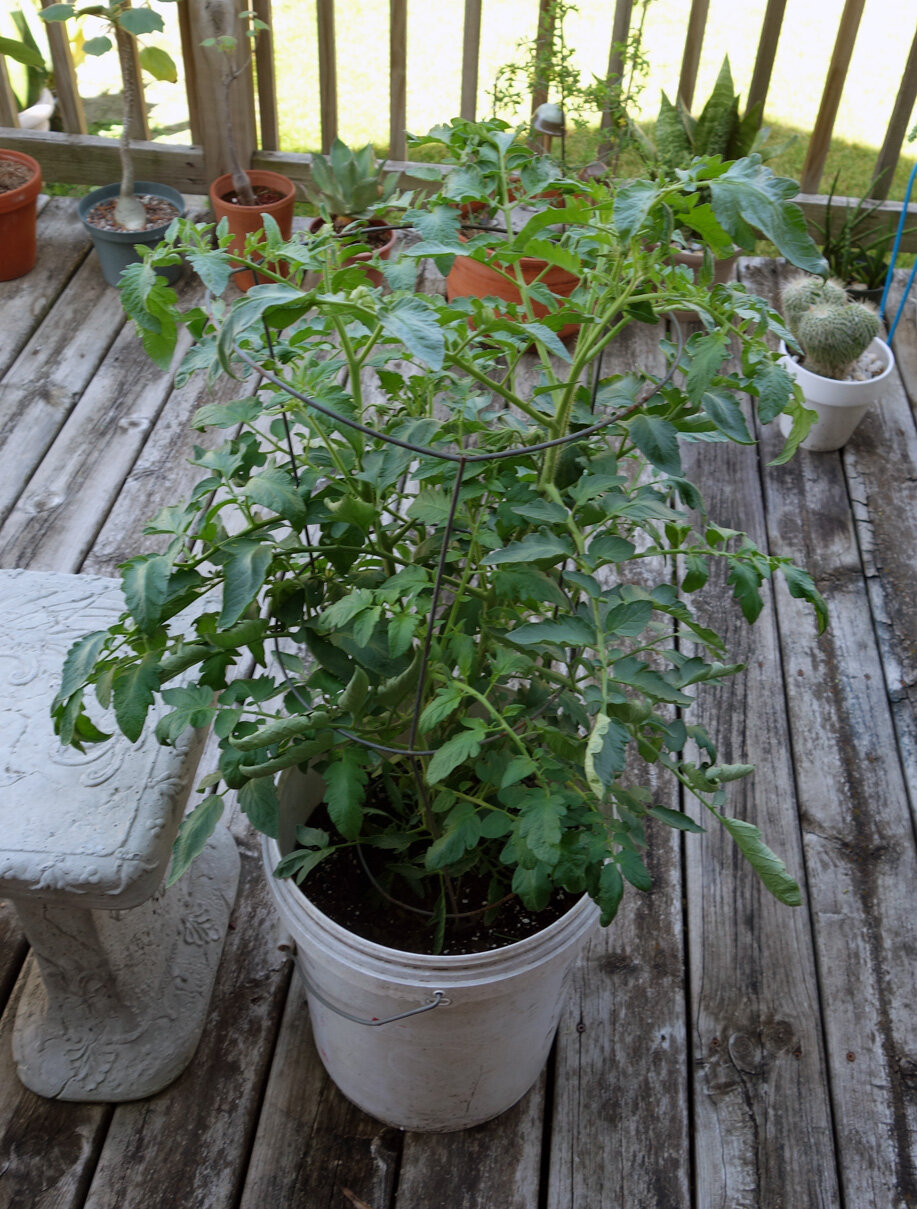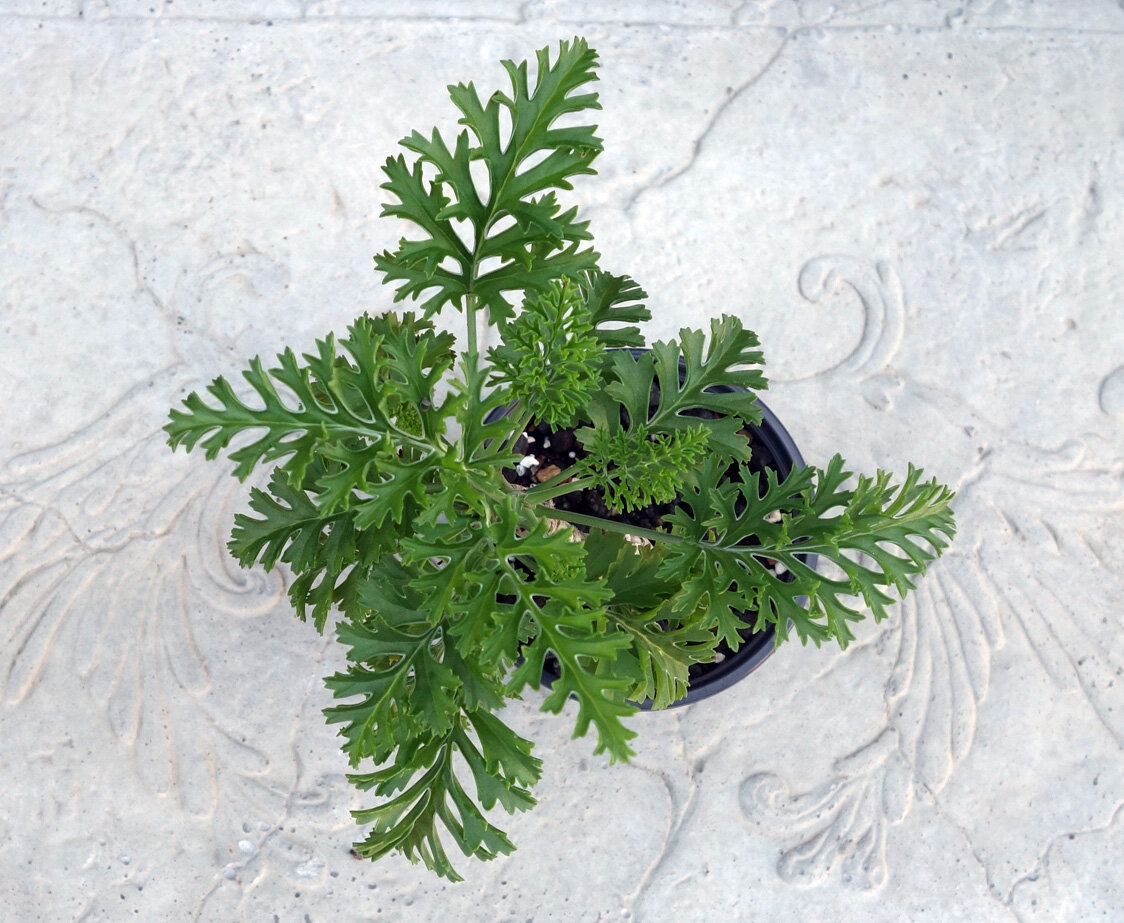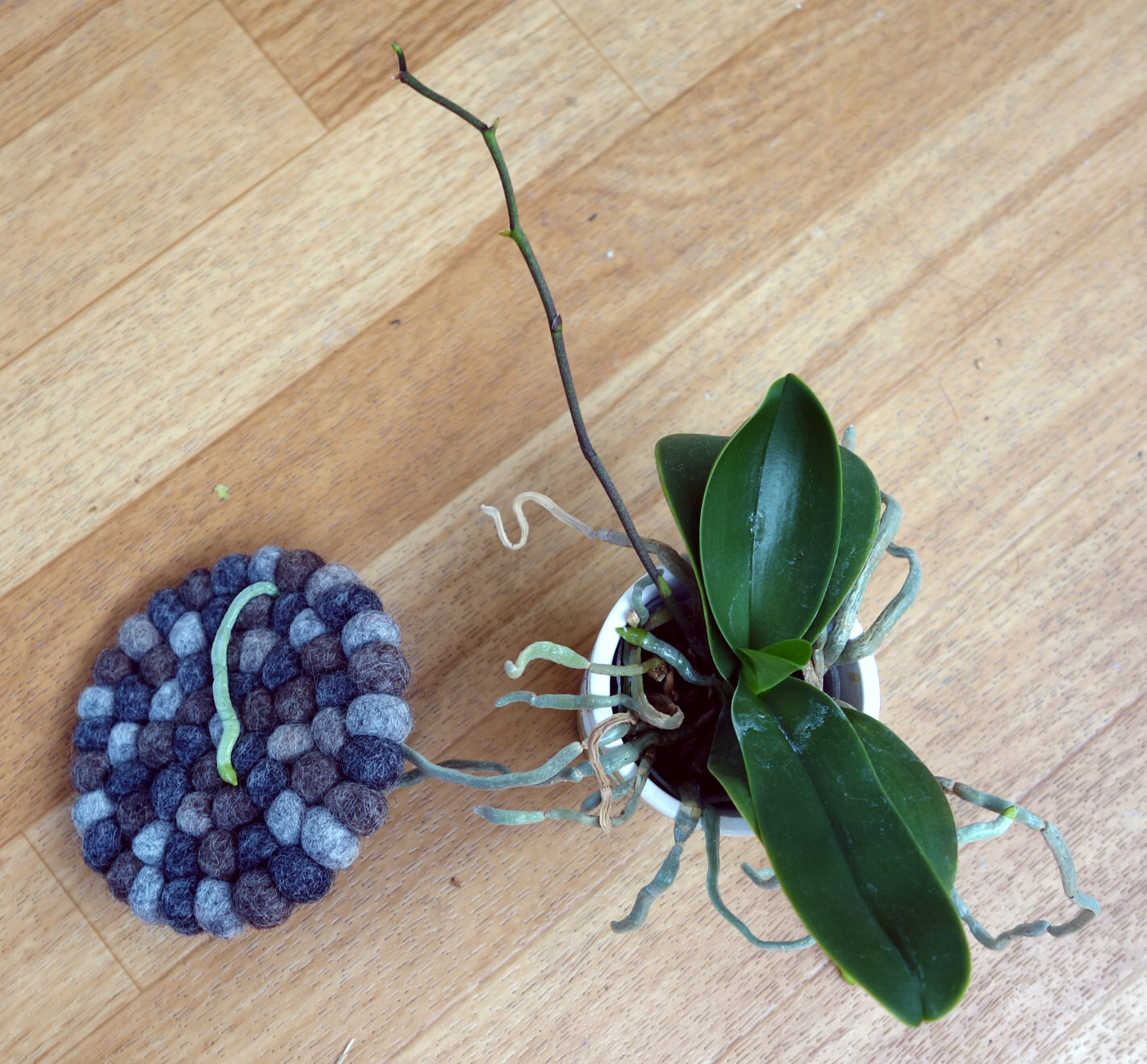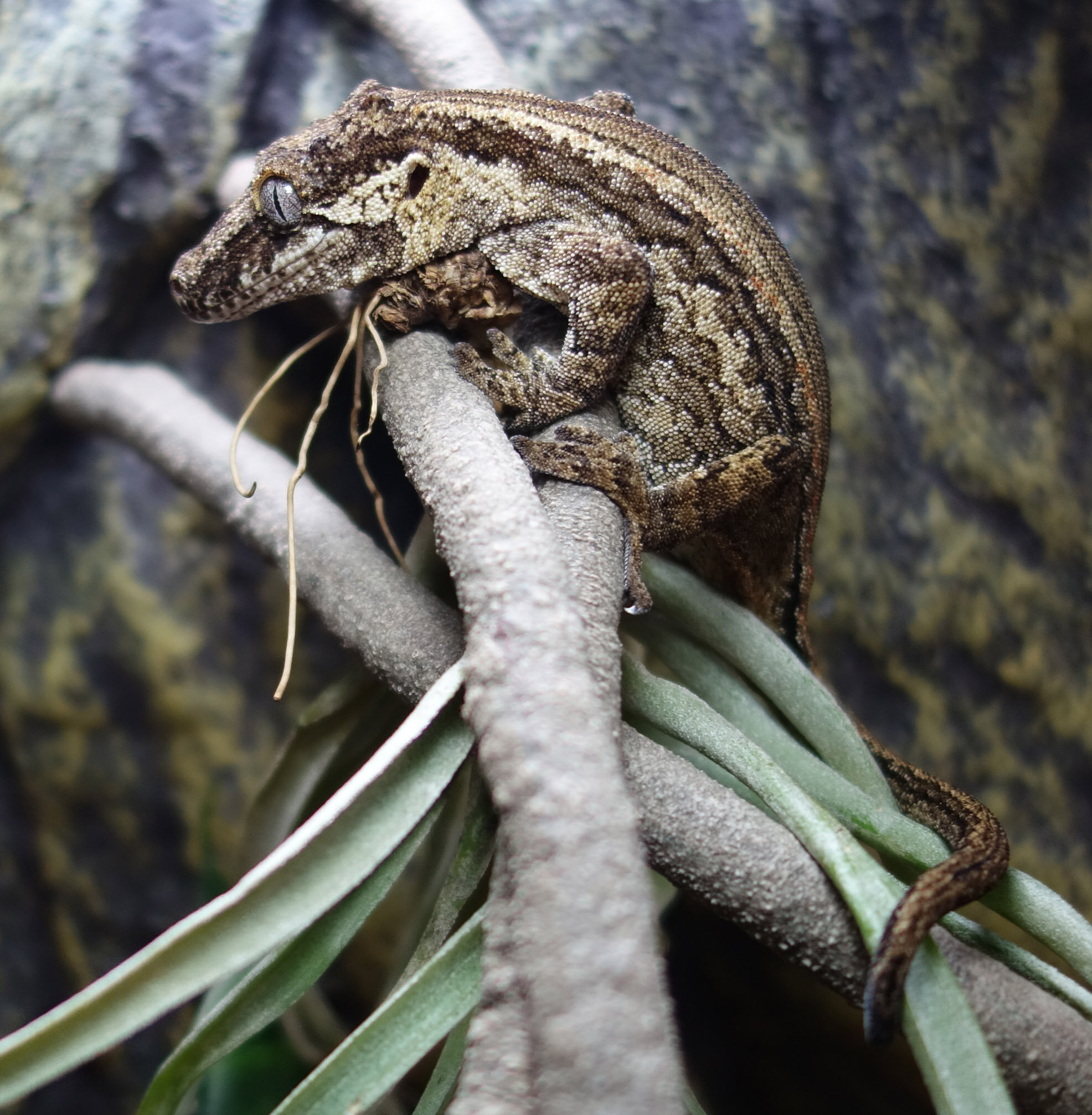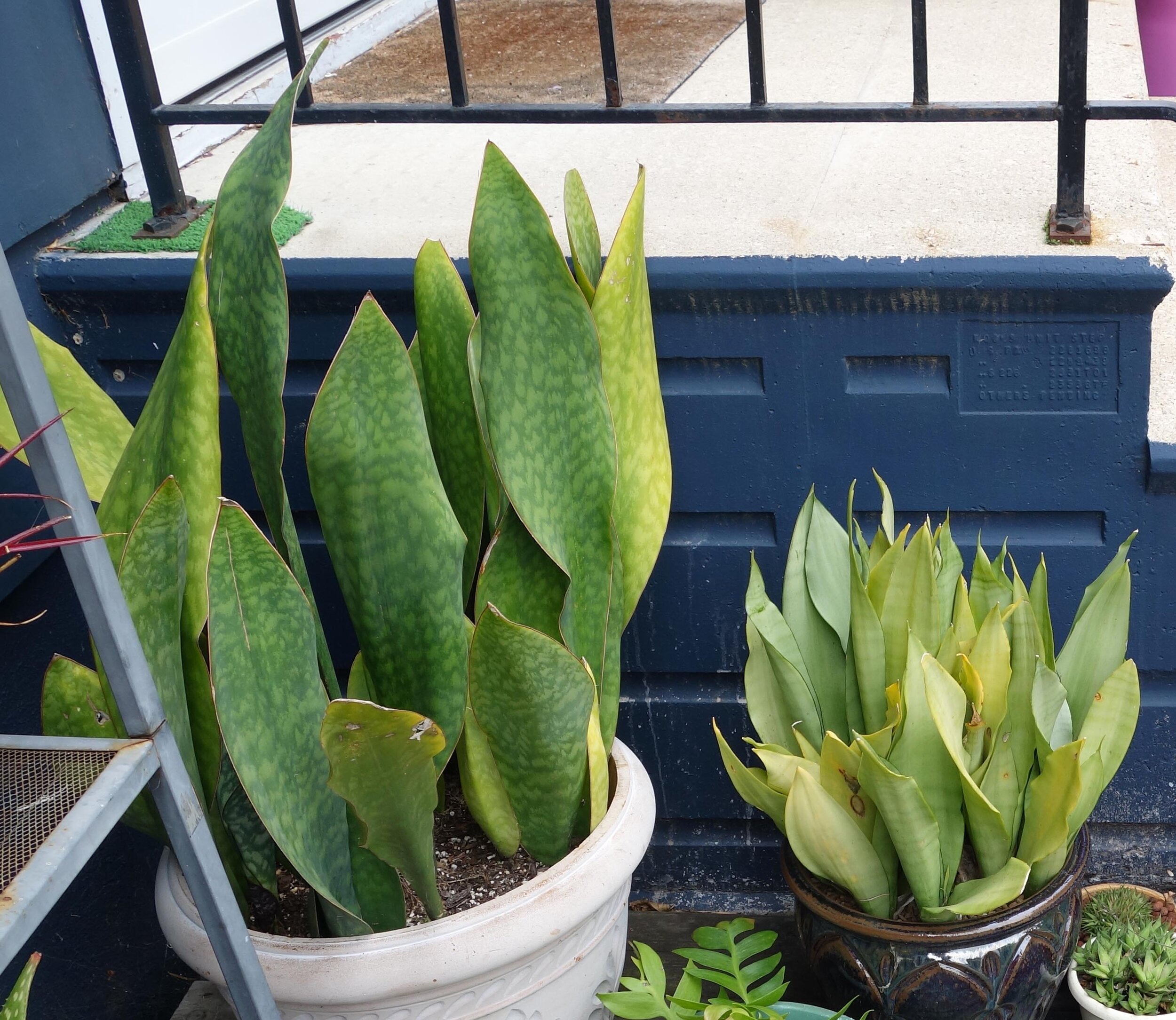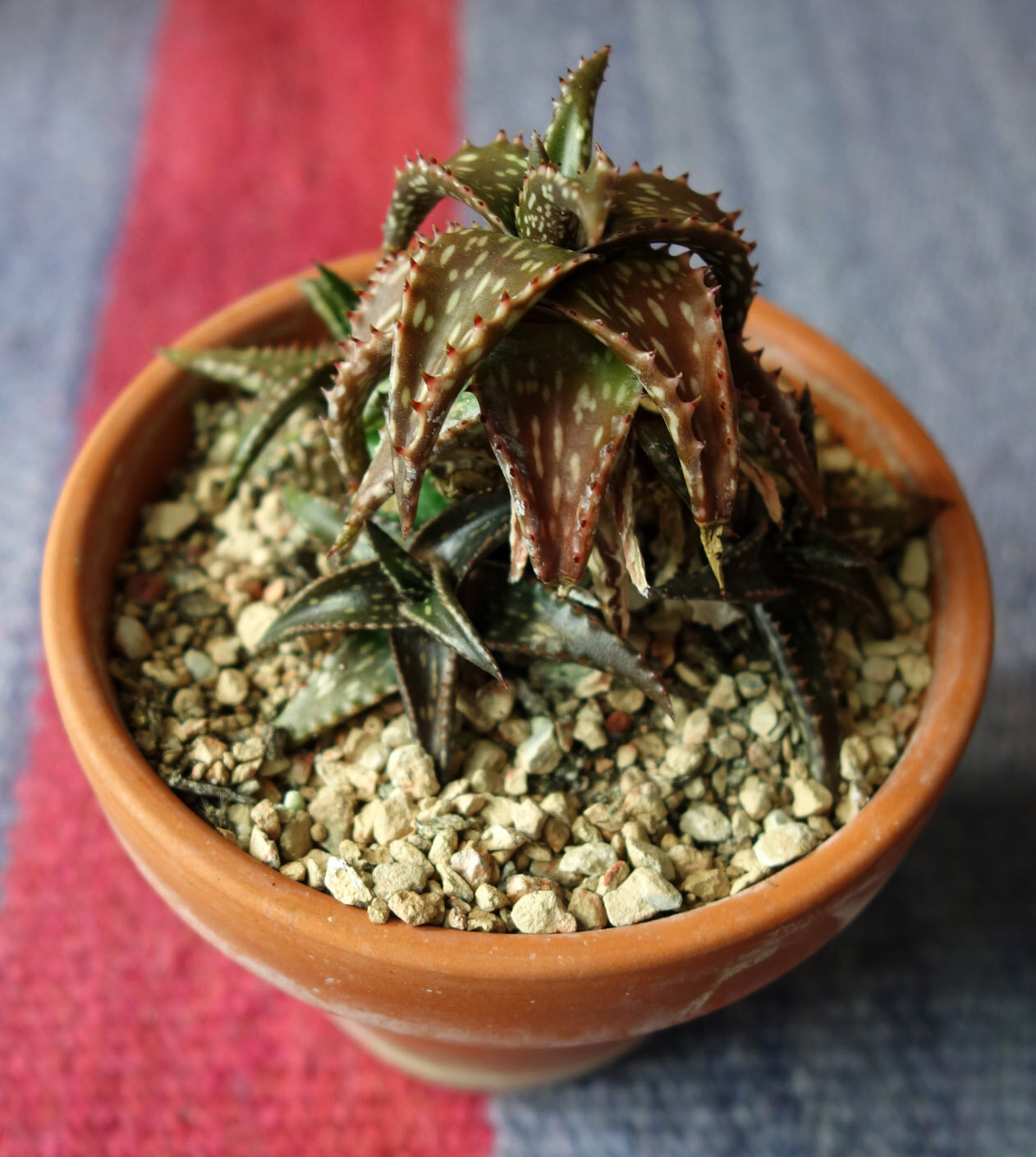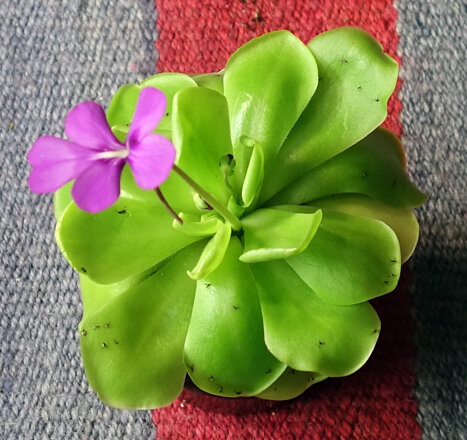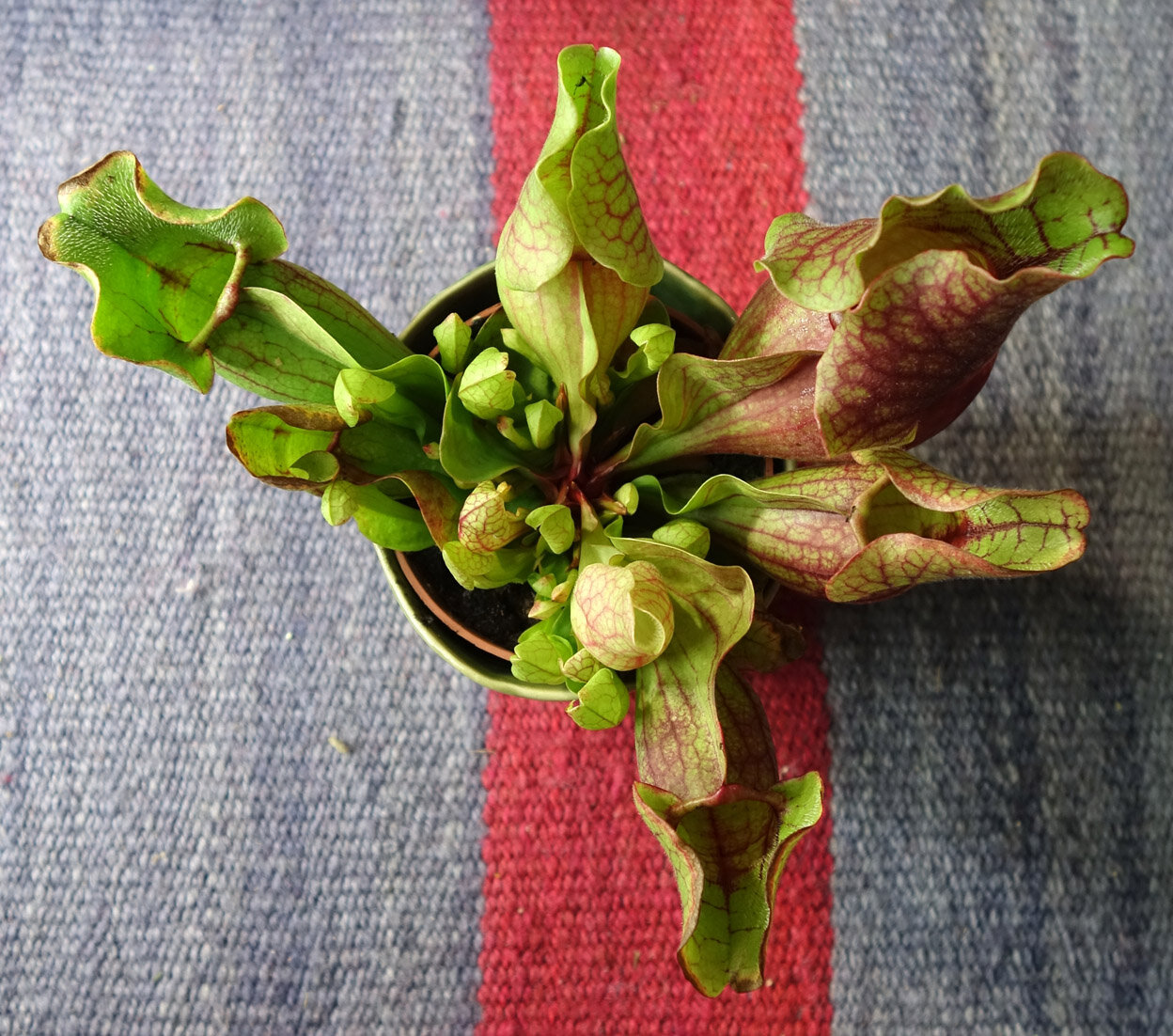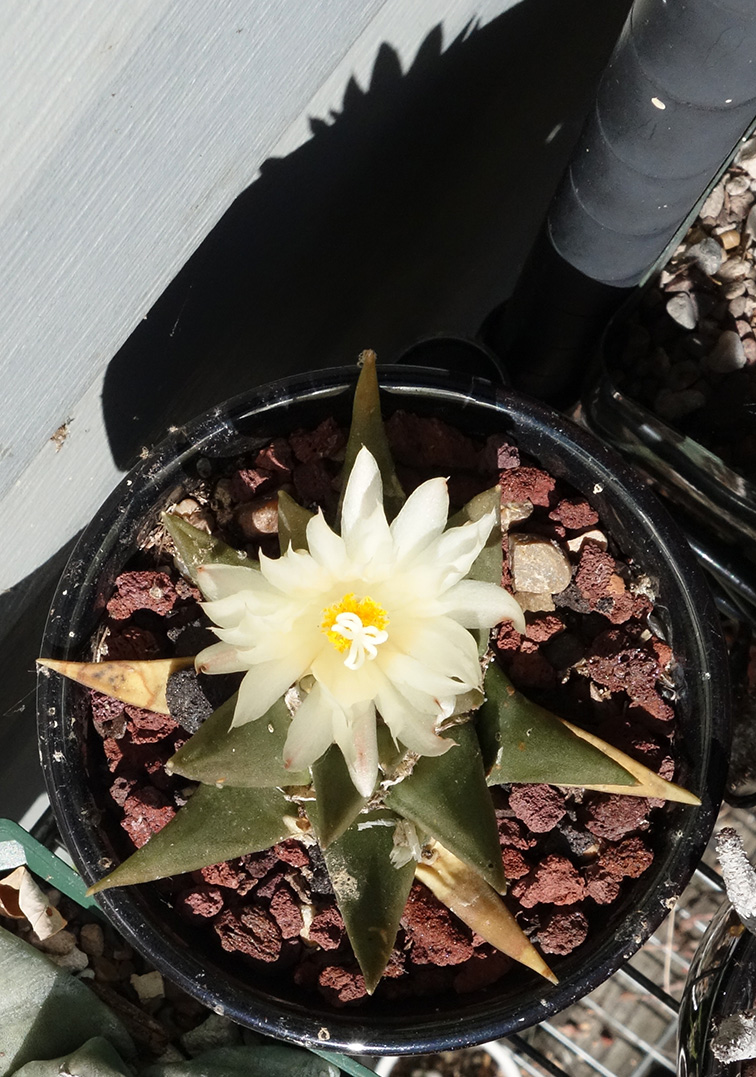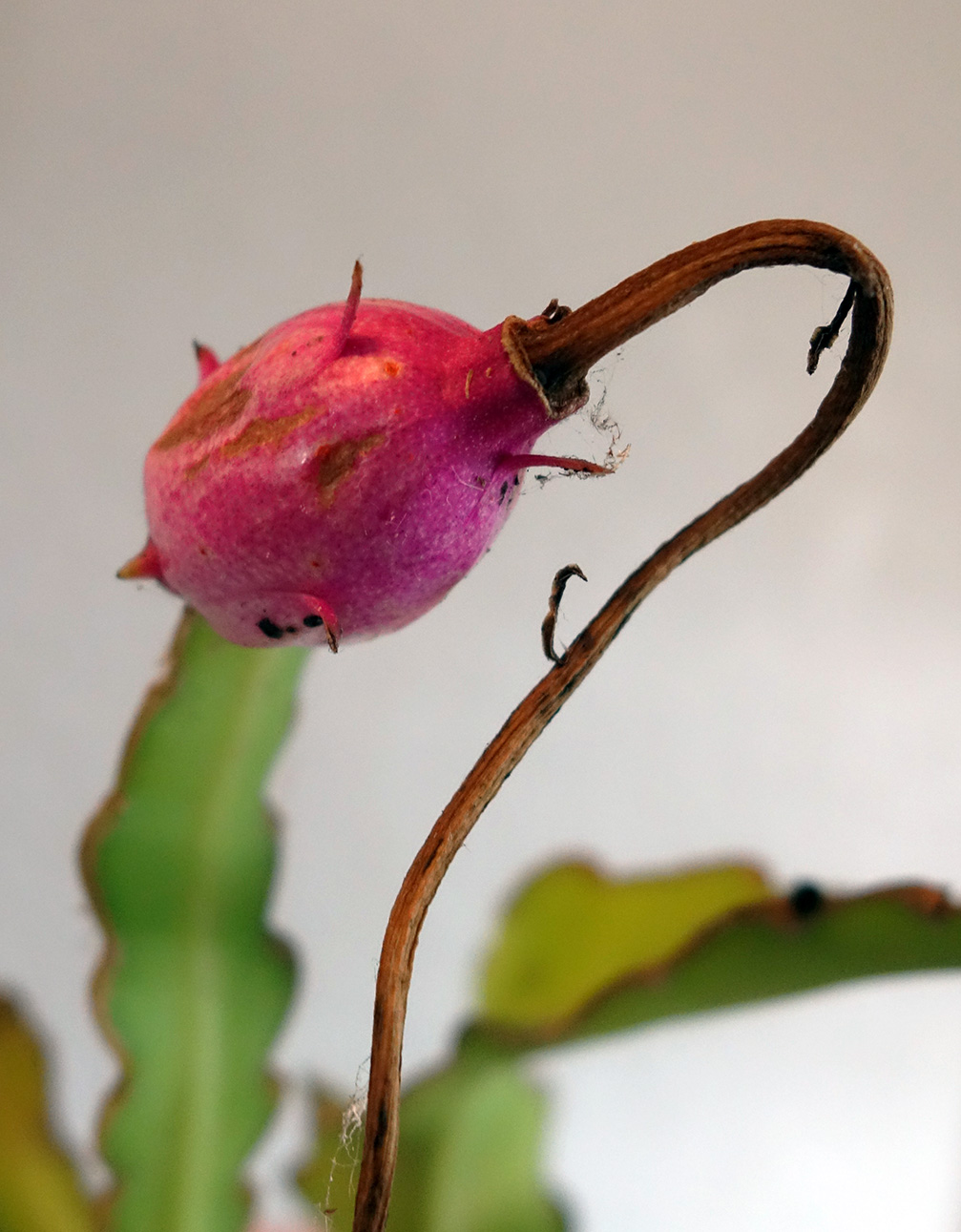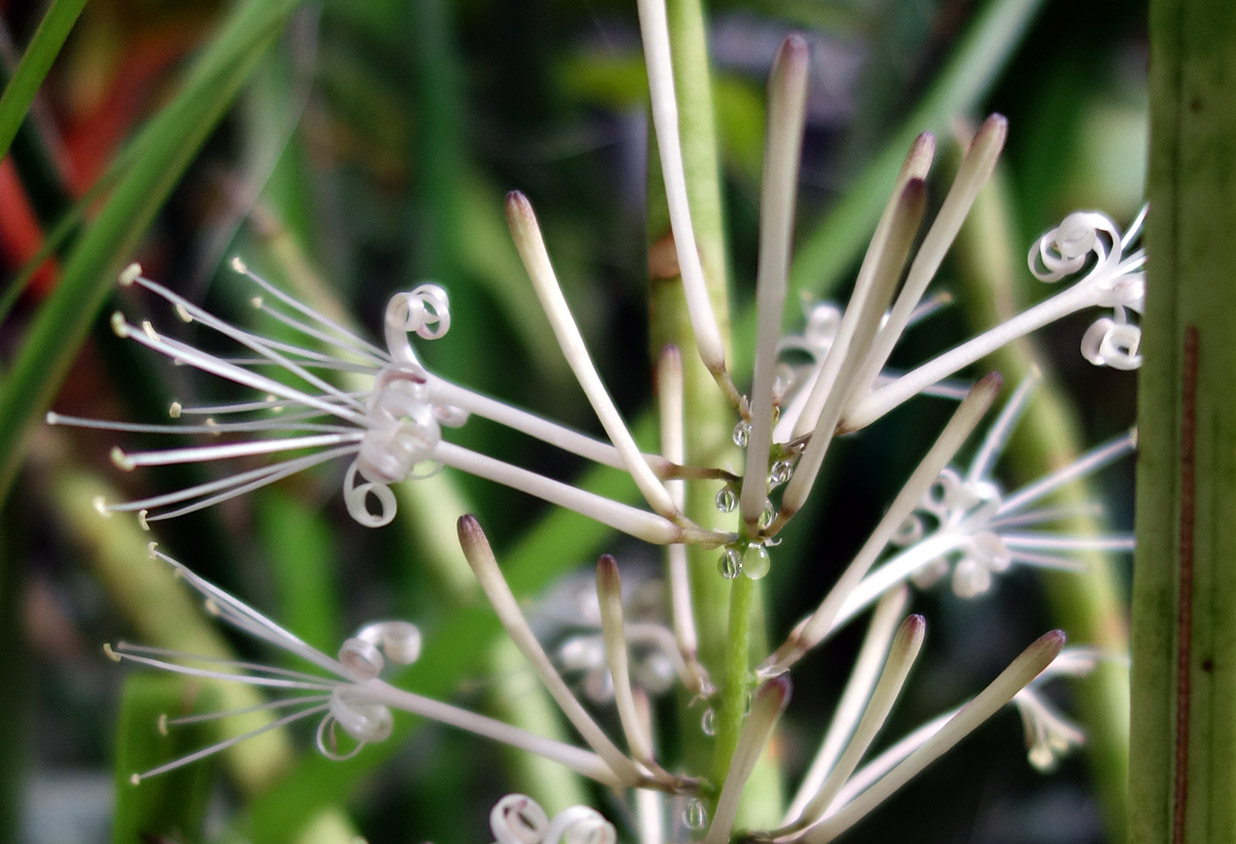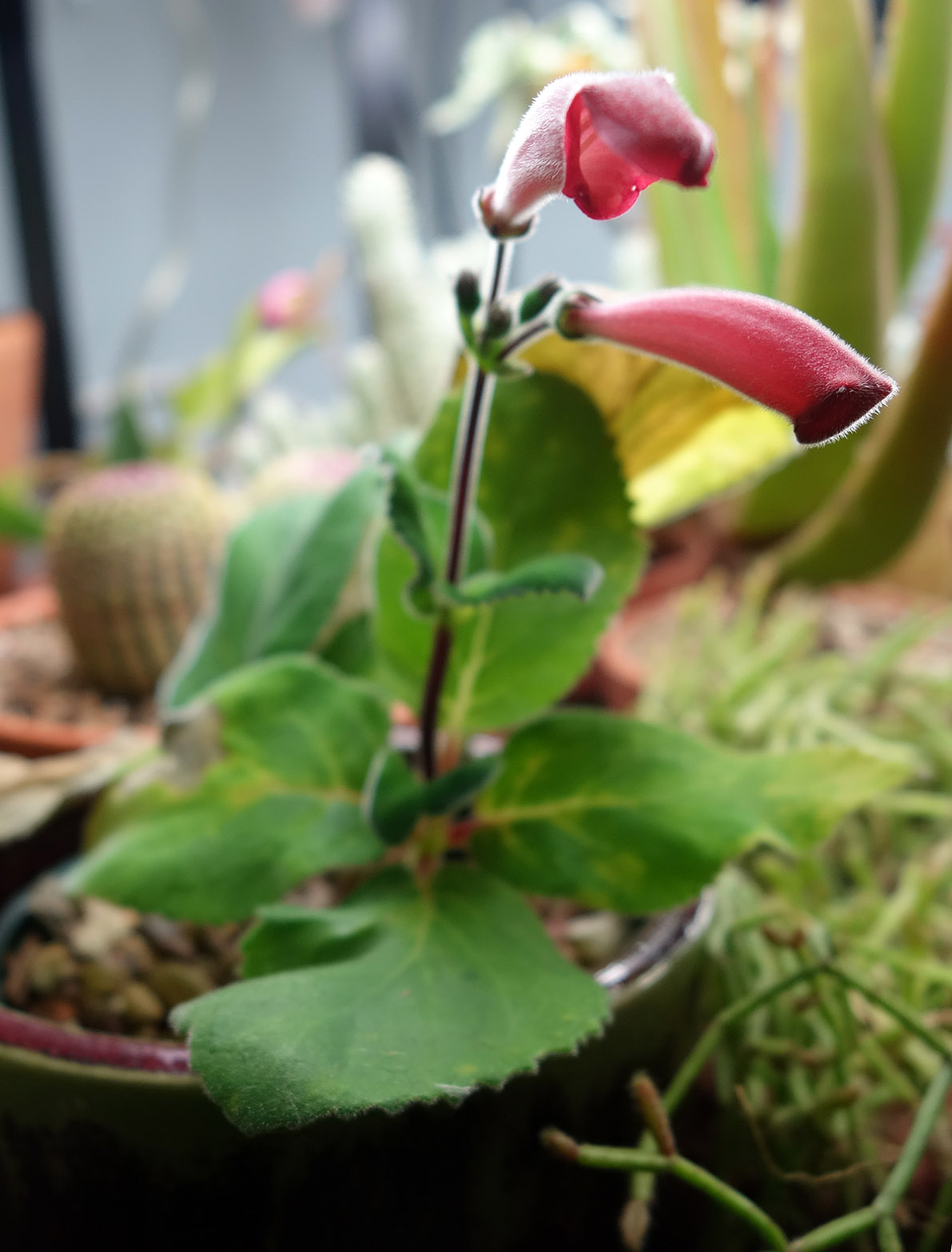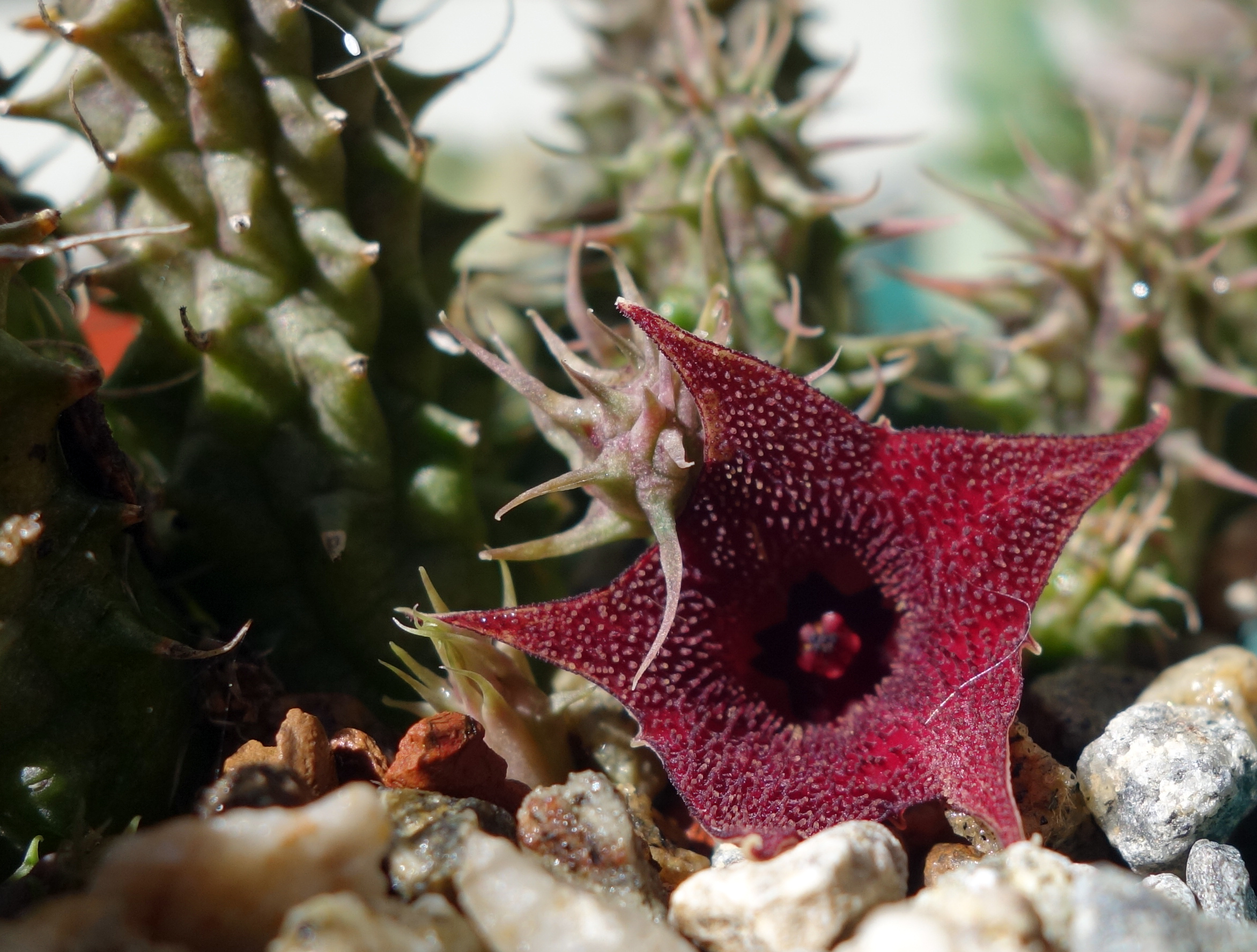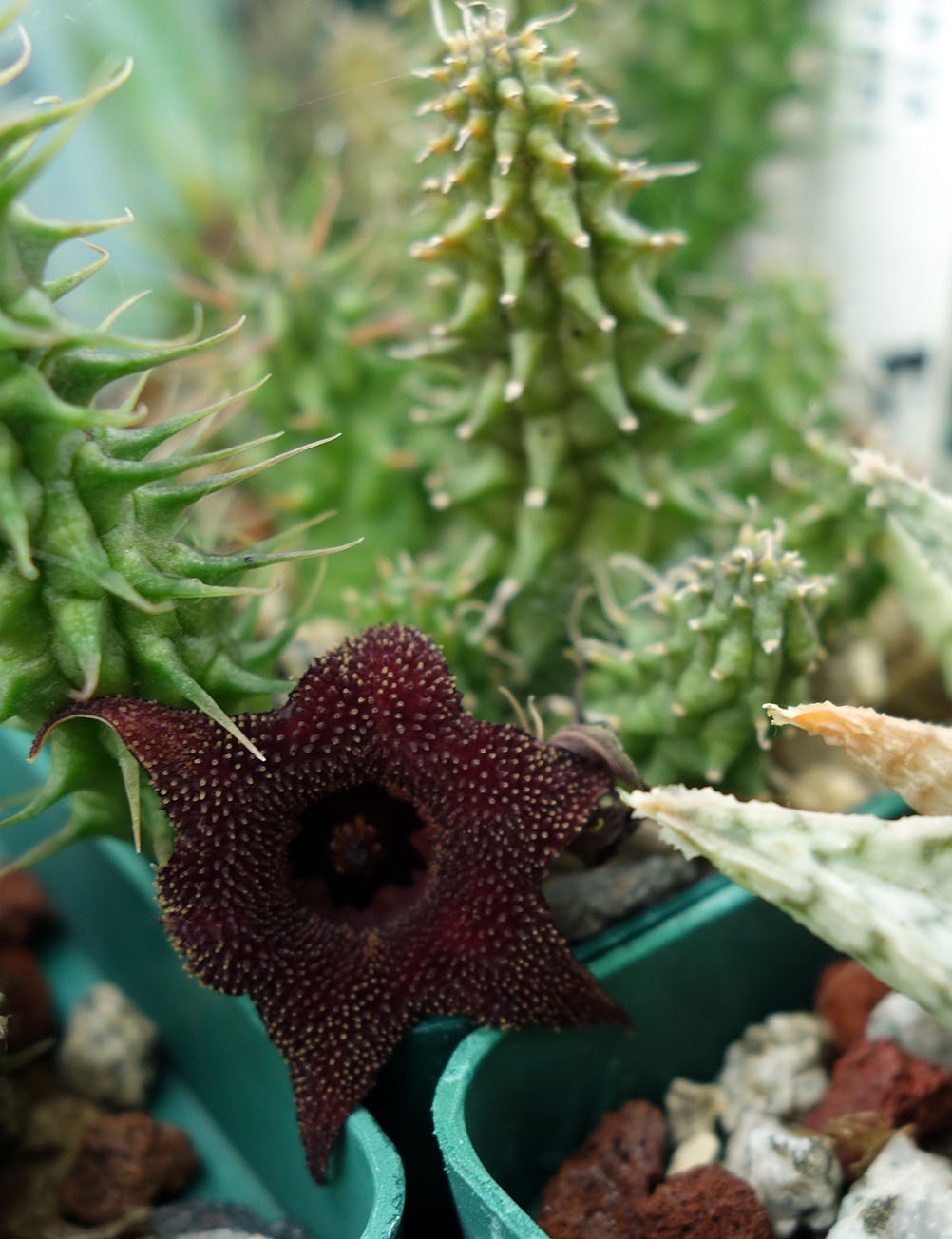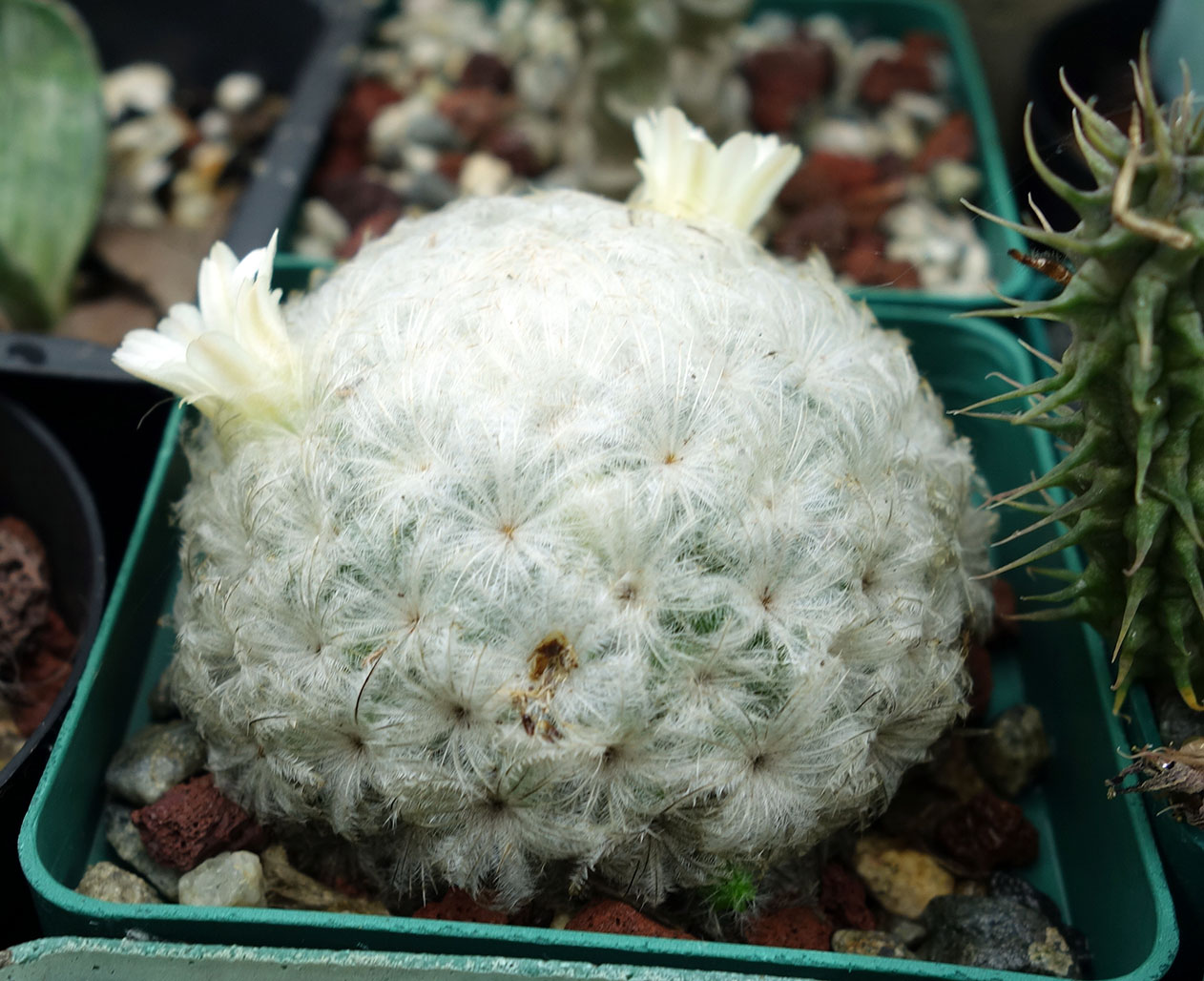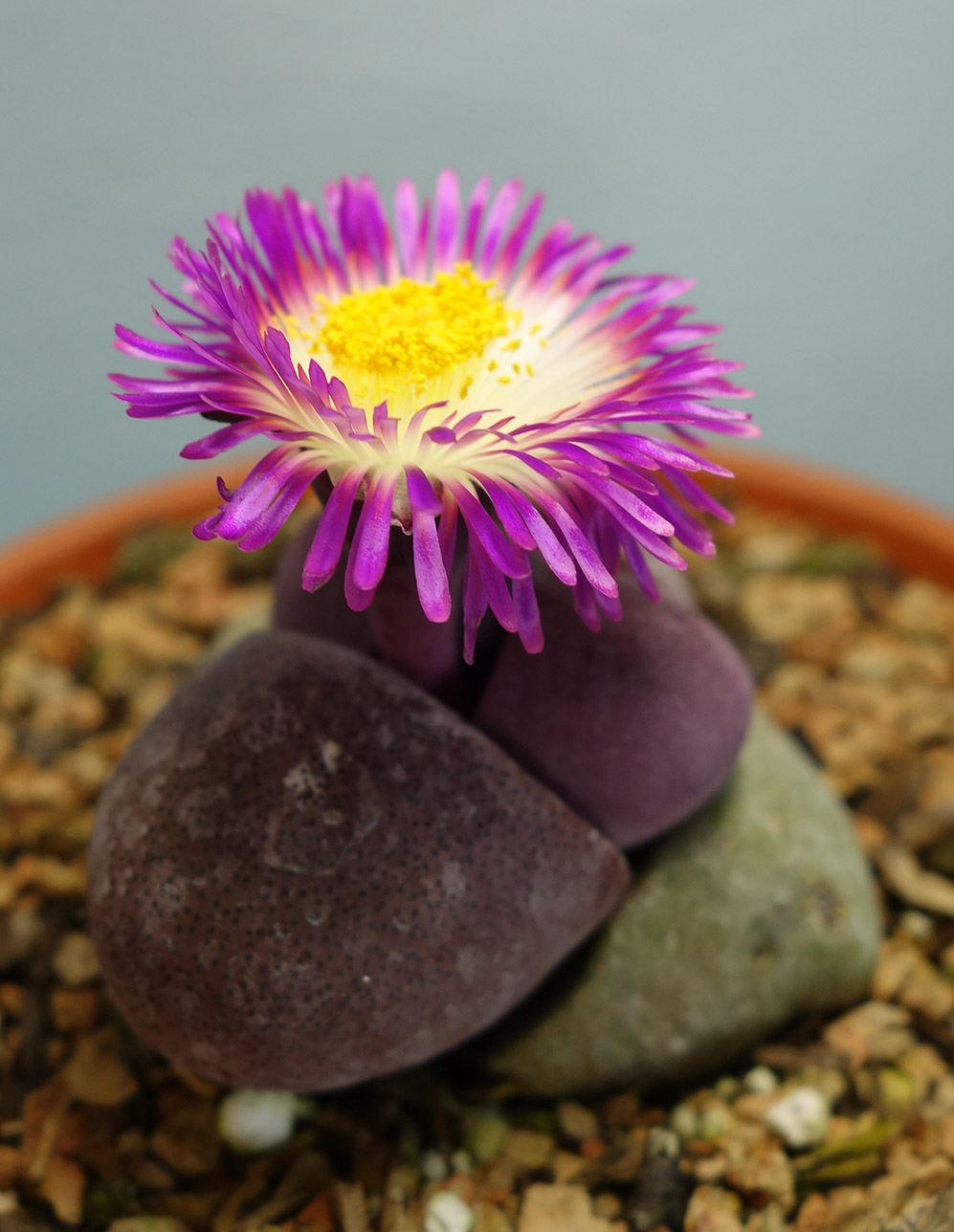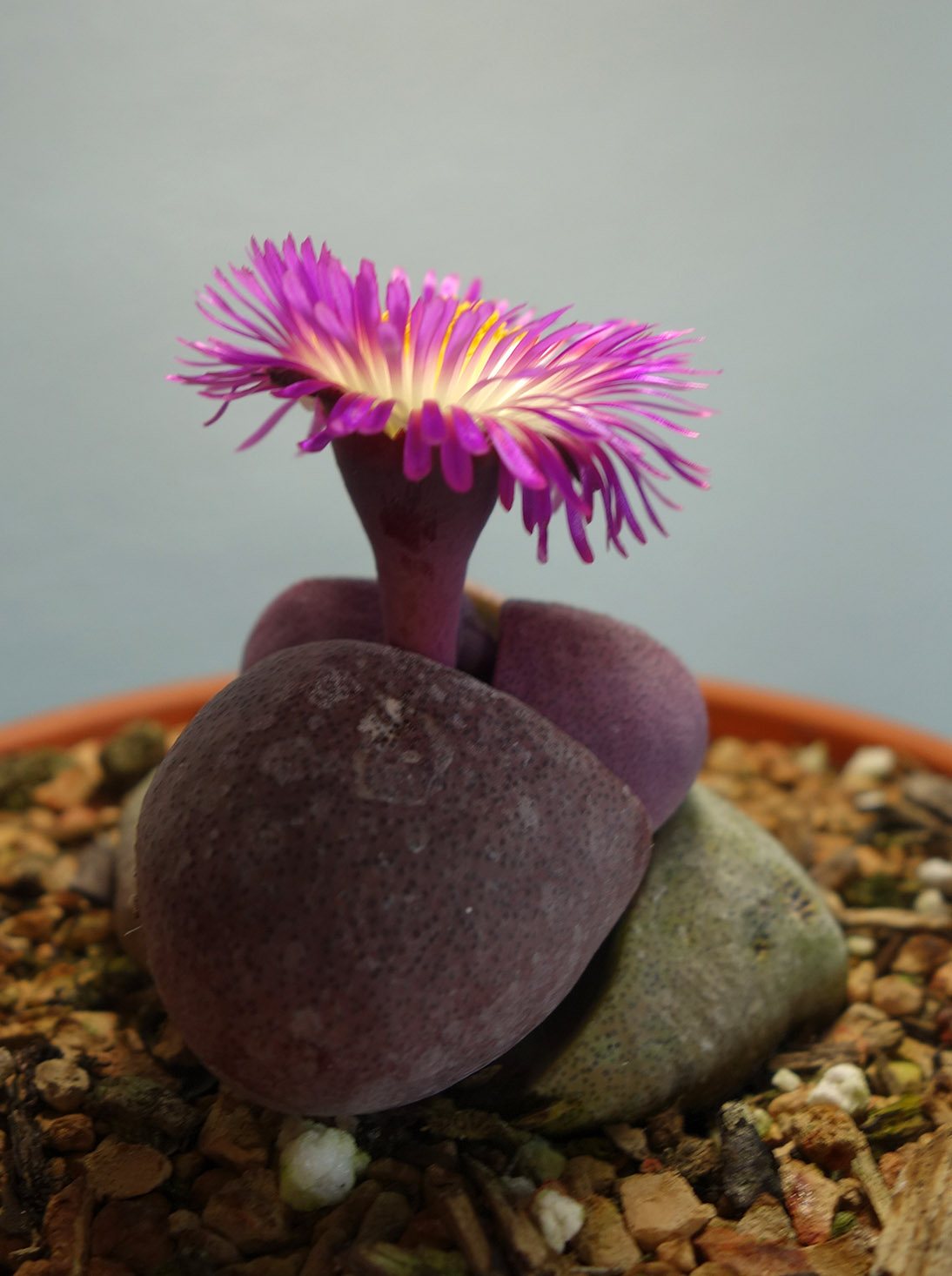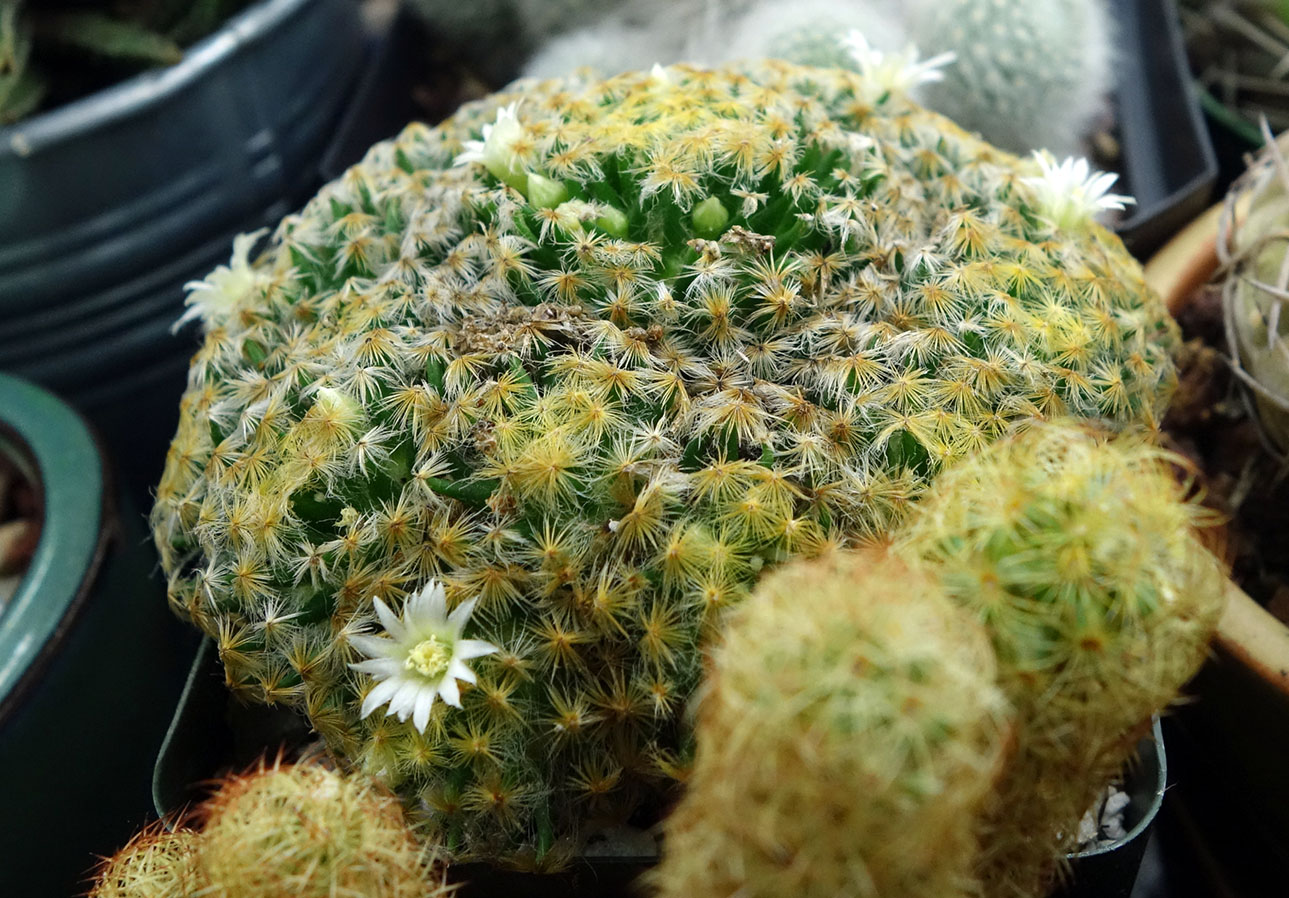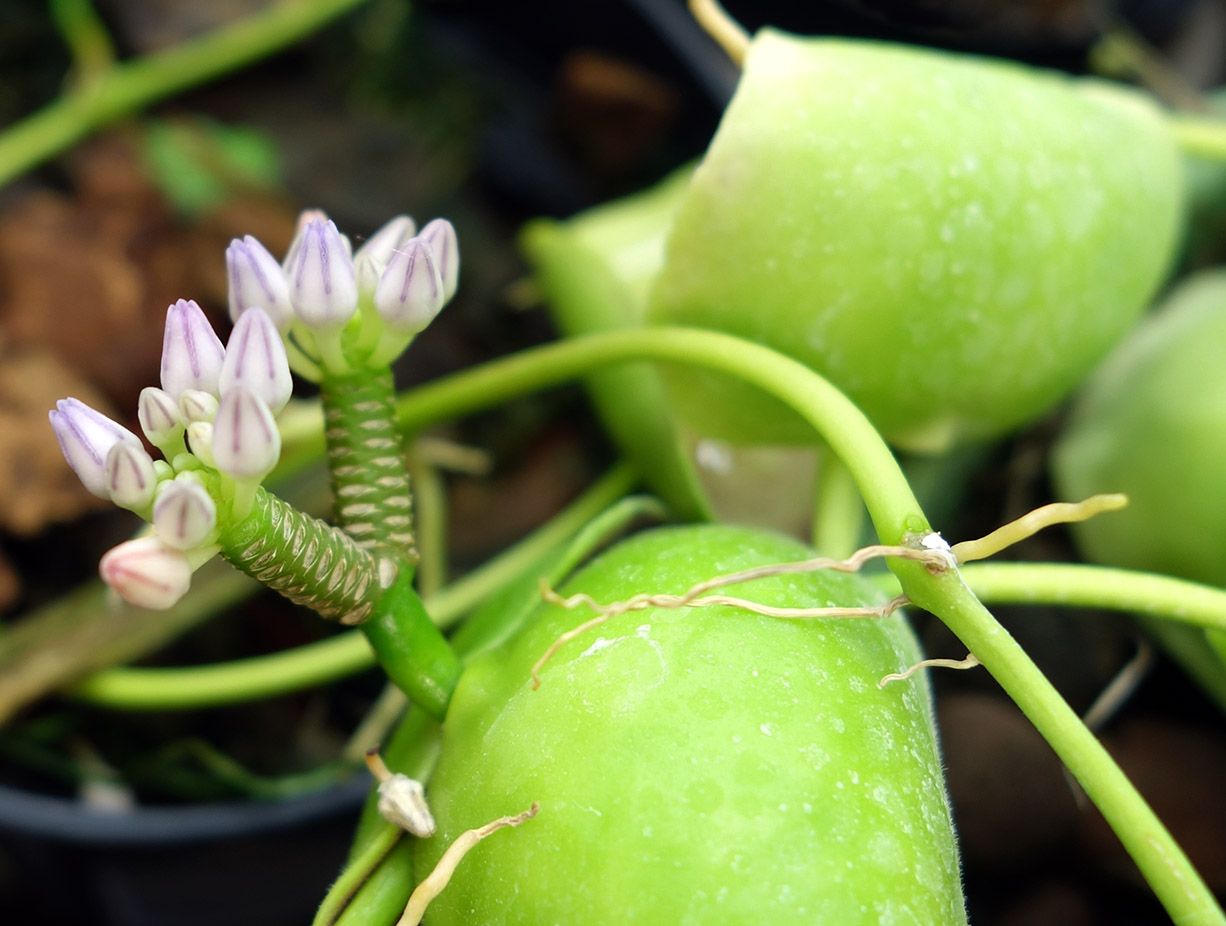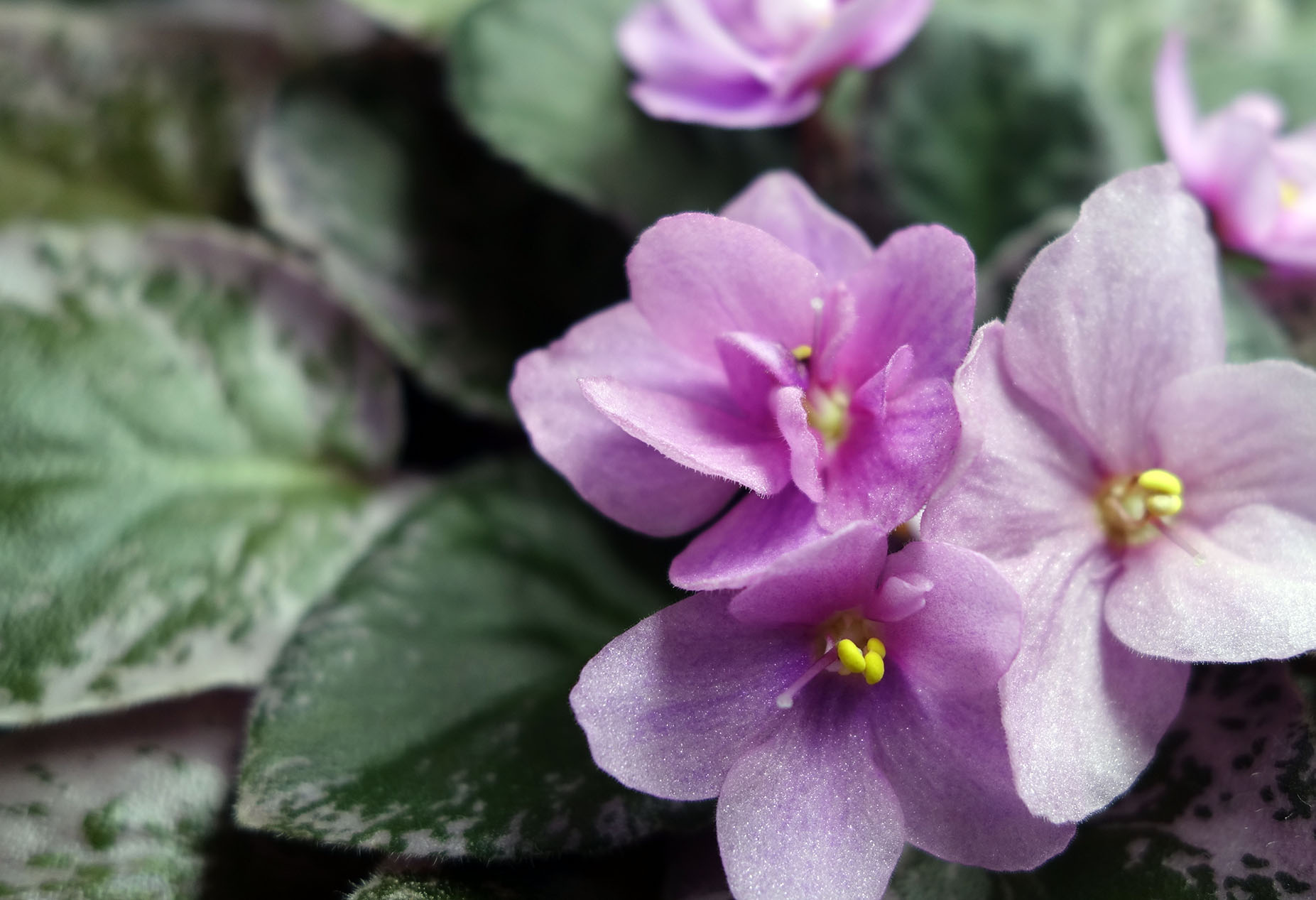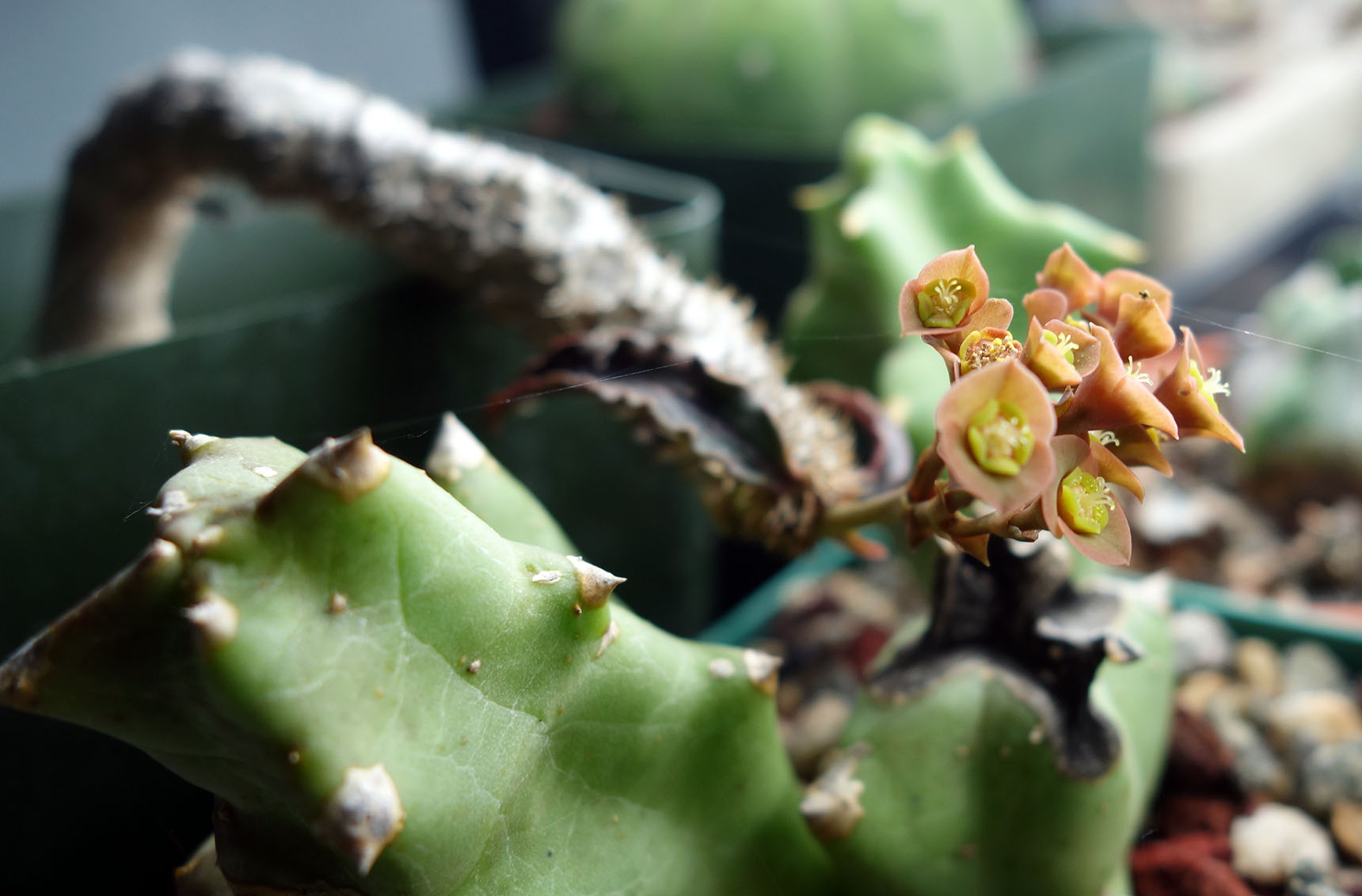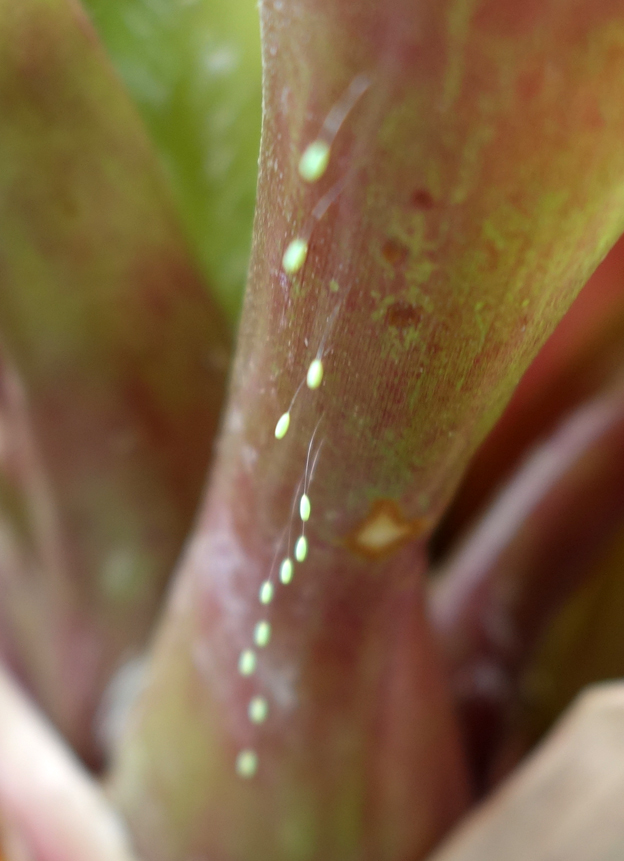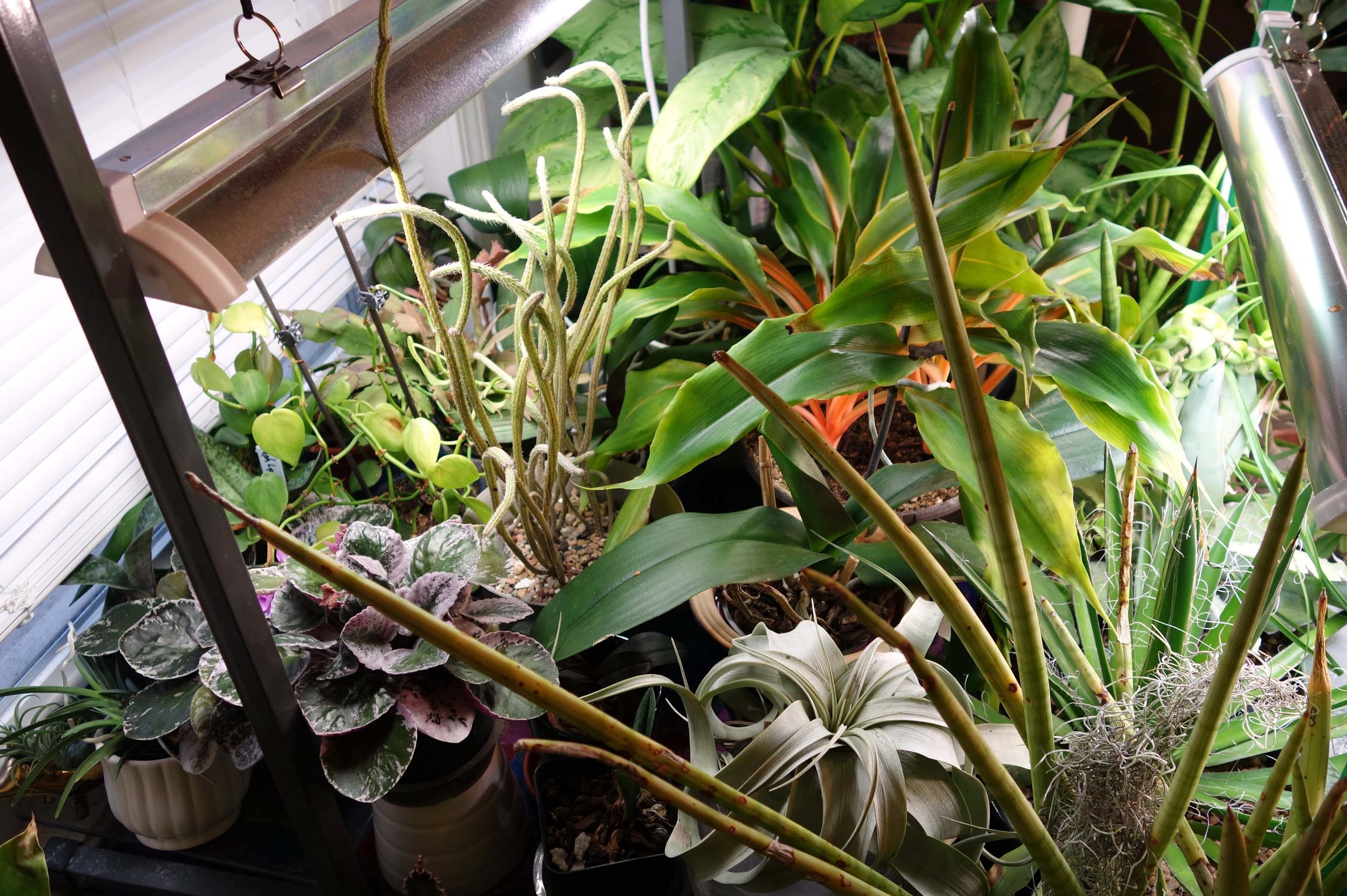It’s been quite a while since I posted anything about my houseplants, and given that Sioux City’s been getting snowy, frigid weather this past week, it feels timely to take a look at a beautiful flower and urge on spring’s arrival!
As you may recall, I have two Haemanthus deformis bulbs in a single pot. It’s a very striking and unusual plant. I believe my bulbs are both approximately seven years old, and they have flowered before. So far they’ve not flowered at the same time, such that I’ve been unable to attempt pollination. Hopefully someday! While there are haemanthus species that are relatively quick to offset, H. deformis is not, so getting viable seeds would be an exciting development.
Right now, one of my H. deformis has been blooming for a couple of weeks! The flower is very low in the plant, which is not atypical though there are images online of some with higher peduncles (and greater age can play a role in that as well). The bulb that is blooming is letting its old leaves die back while focusing on its flower, but will then grow a new pair of leaves (you can see the beginning of one to the right of the bloom)!.
If you’re curious about their care, they spend the warm weather outside in light shade (usually early May through early October), and come inside for the colder seasons where they bask under grow lights. They get watered once every week or two, occasionally with weak fertilizer.
Most haemanthus are deciduous, but H. deformis is one of the evergreen species. I keep four haemanthus species at present, and it’s a 50-50 split between deciduous and evergreen in my collection. Of those four, this species is my favorite! I love its outrageous leaves; they usually fully cover the whole top of the pot, so to water I have to gently lift a leaf up to sneak the watering can spout in beneath it!
